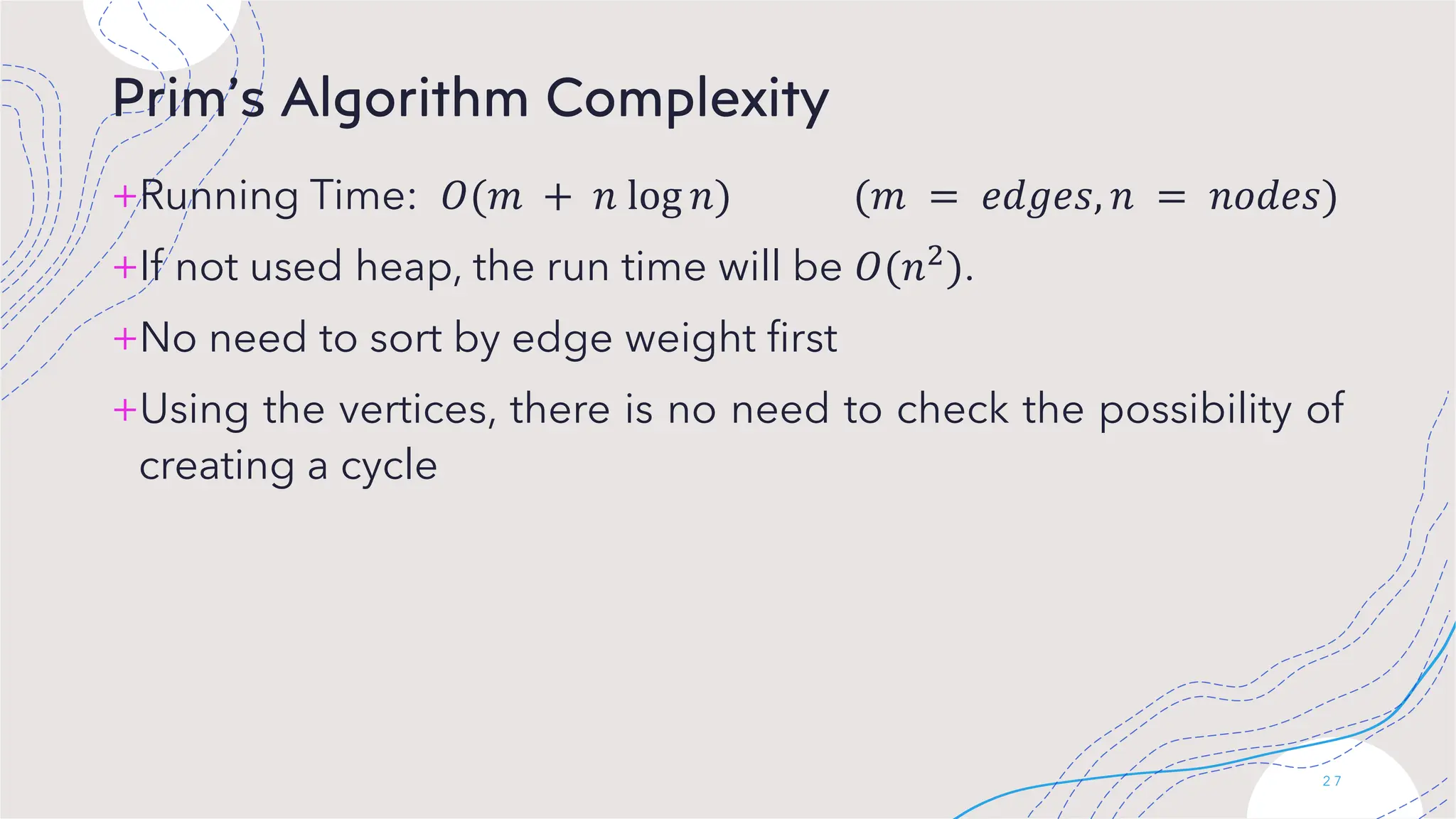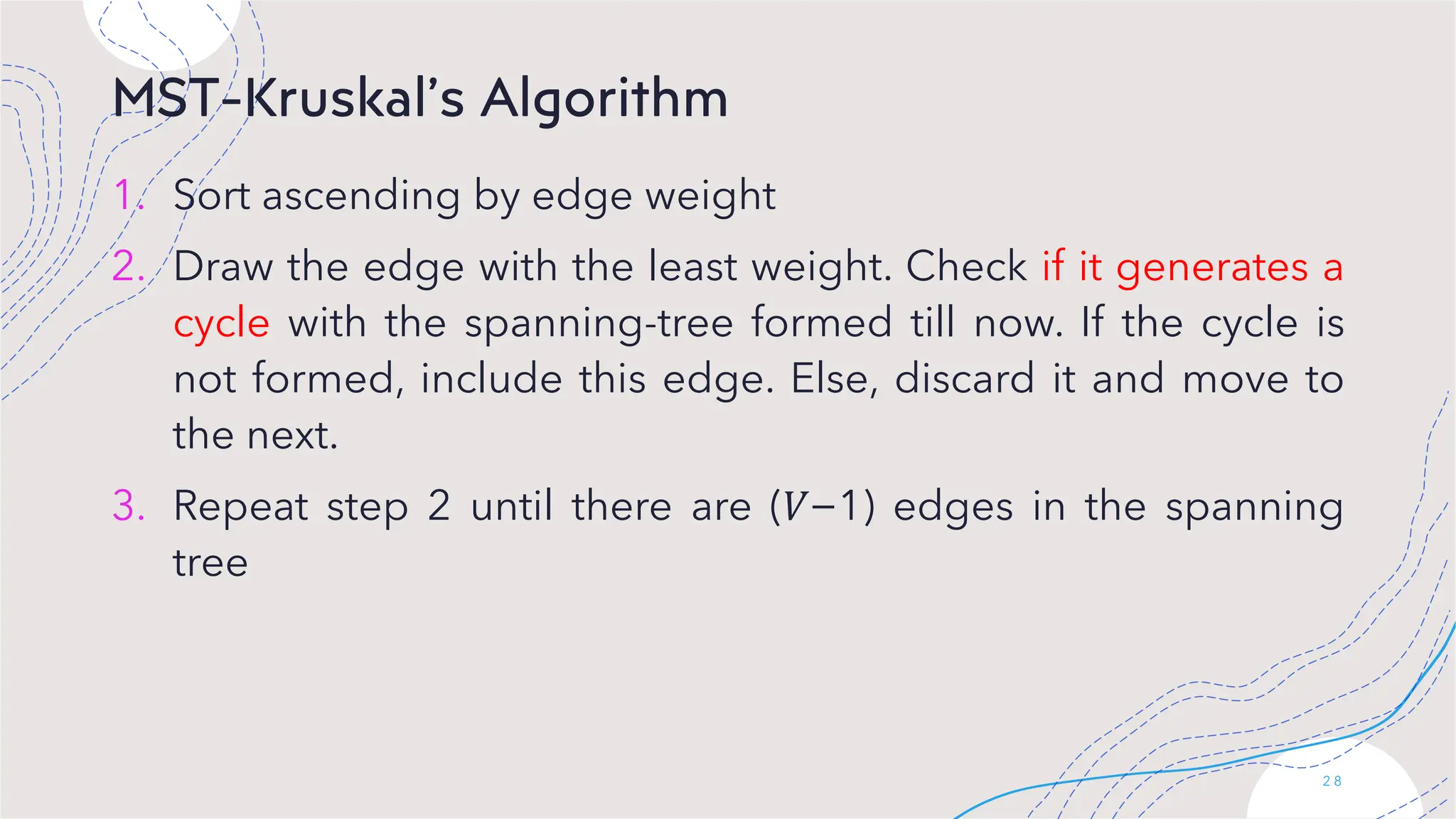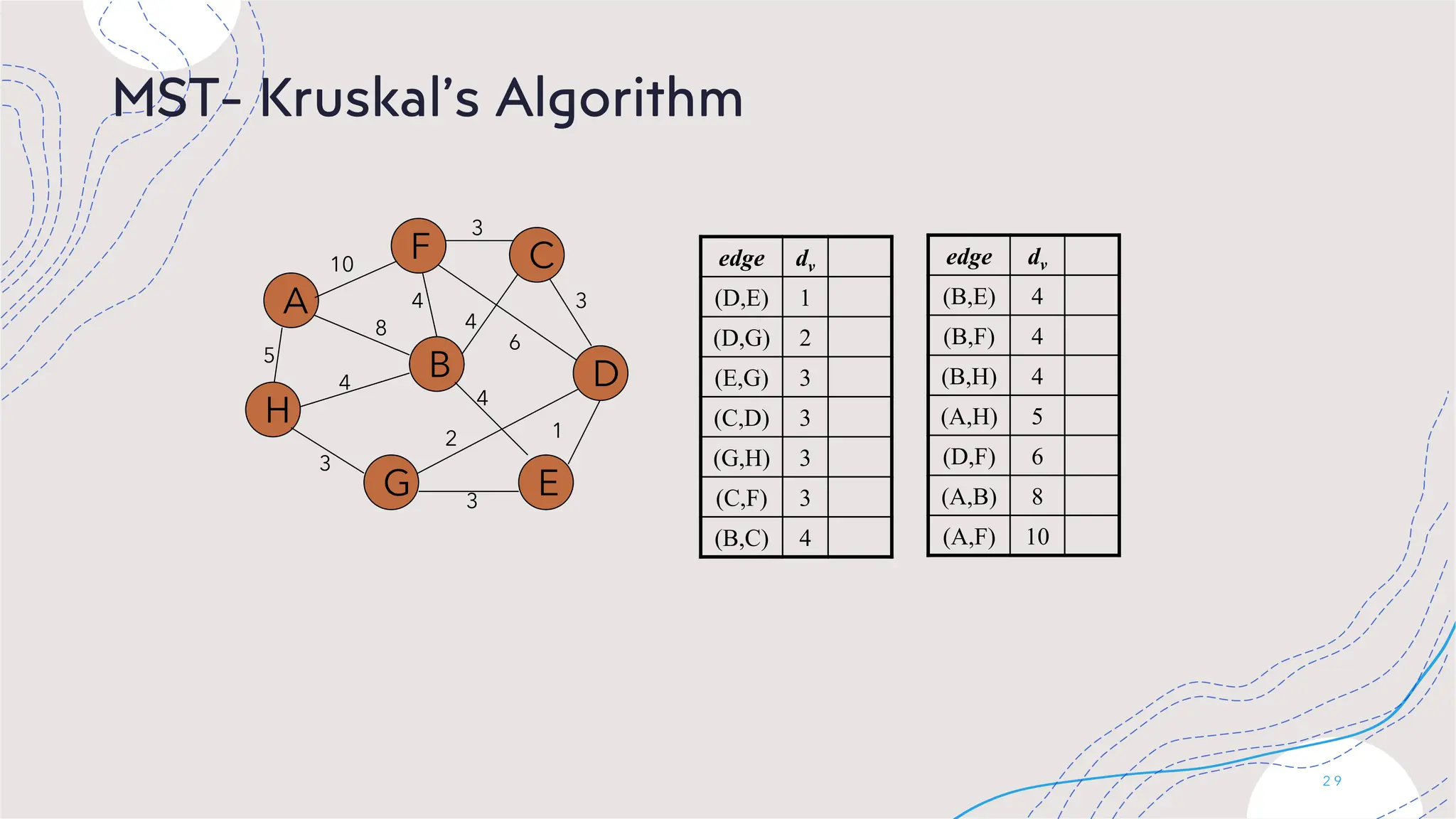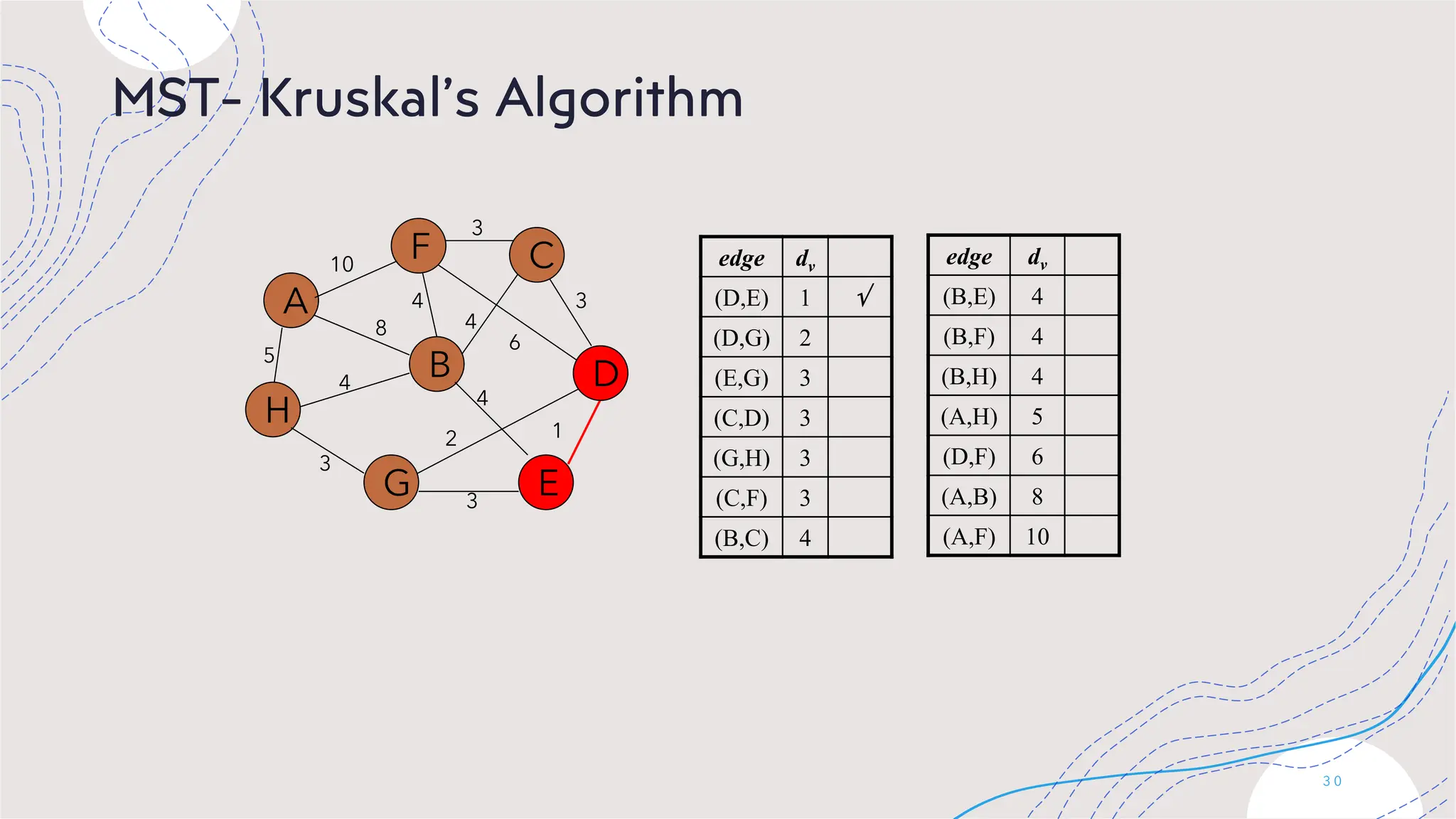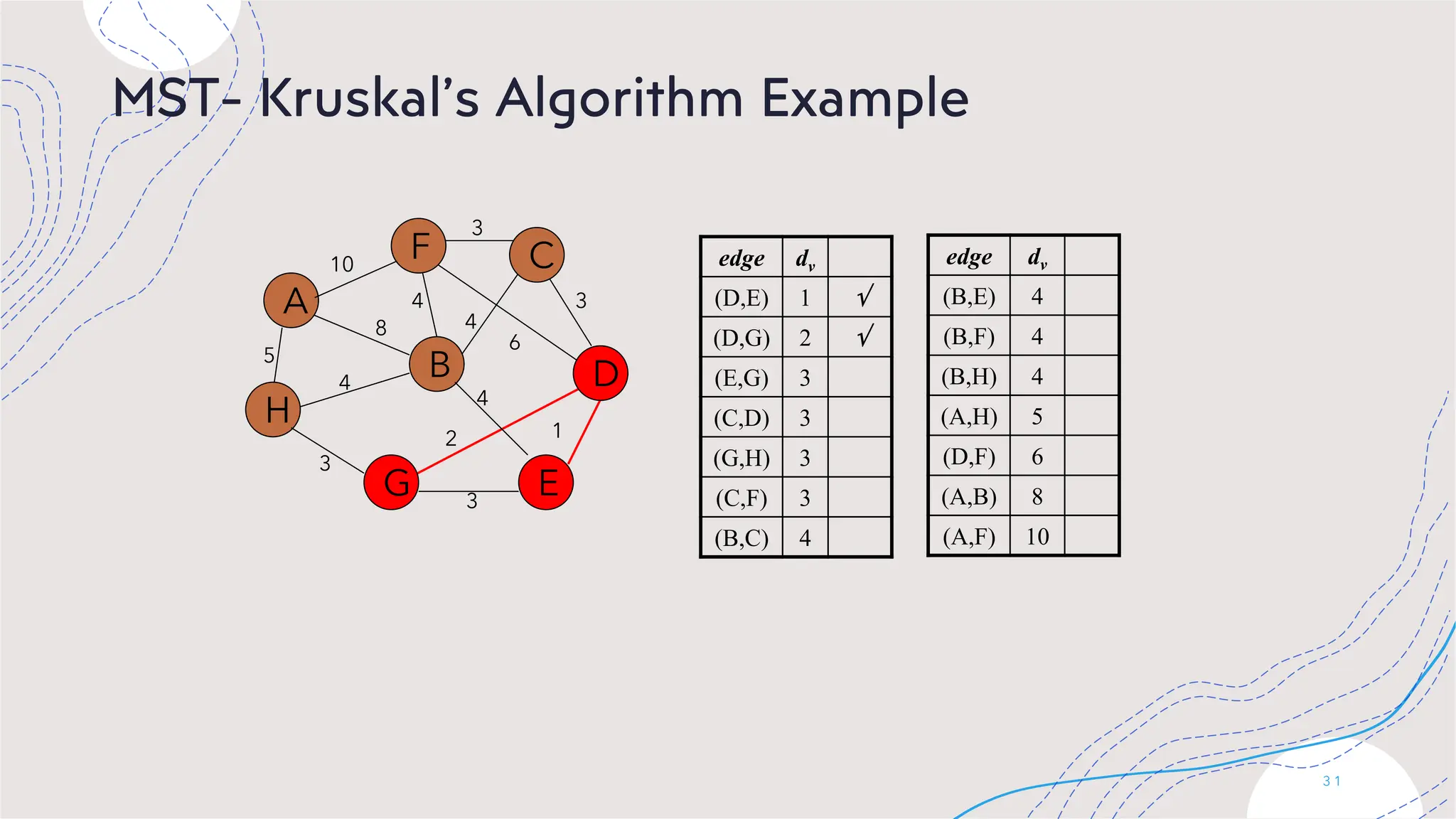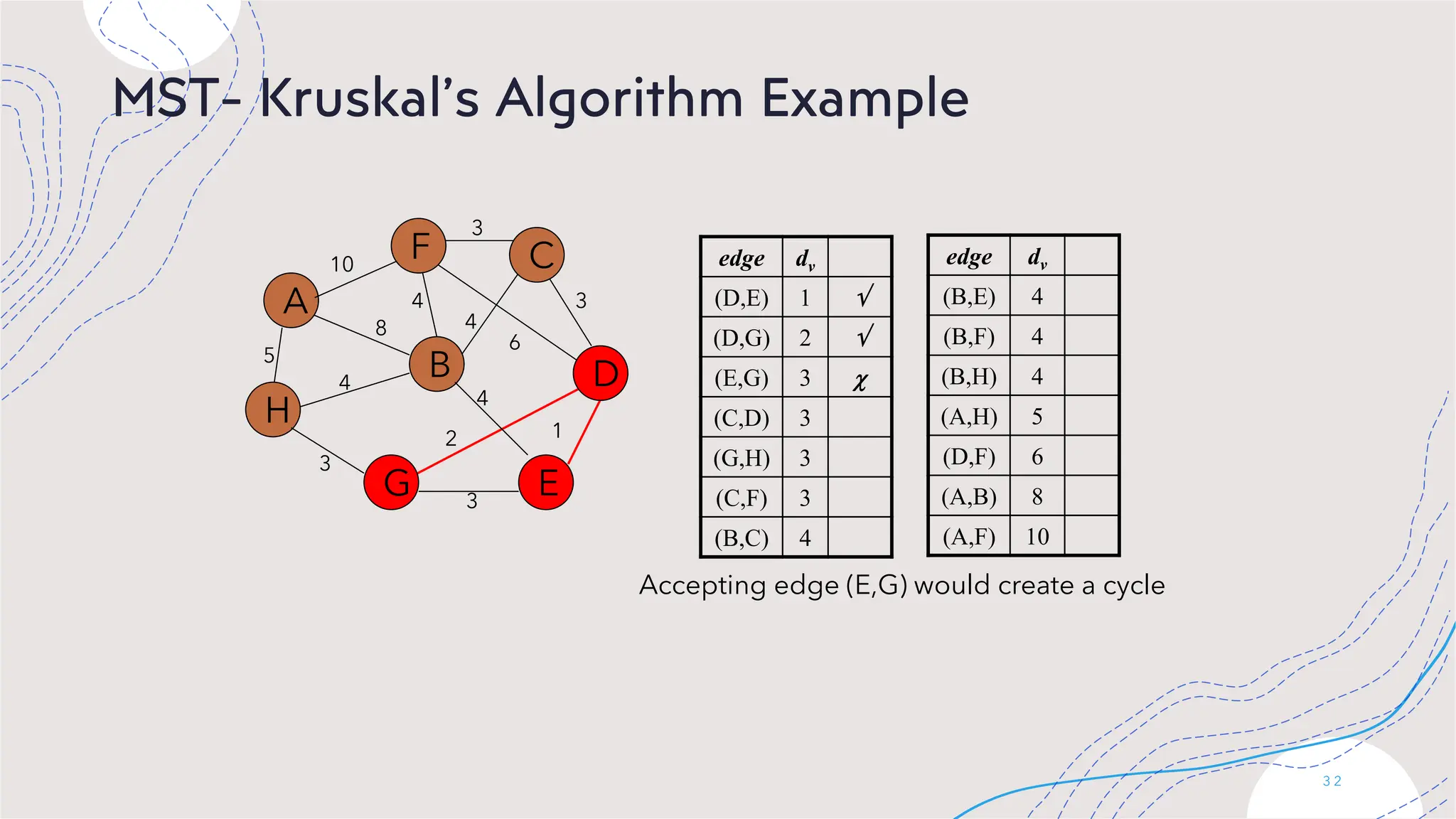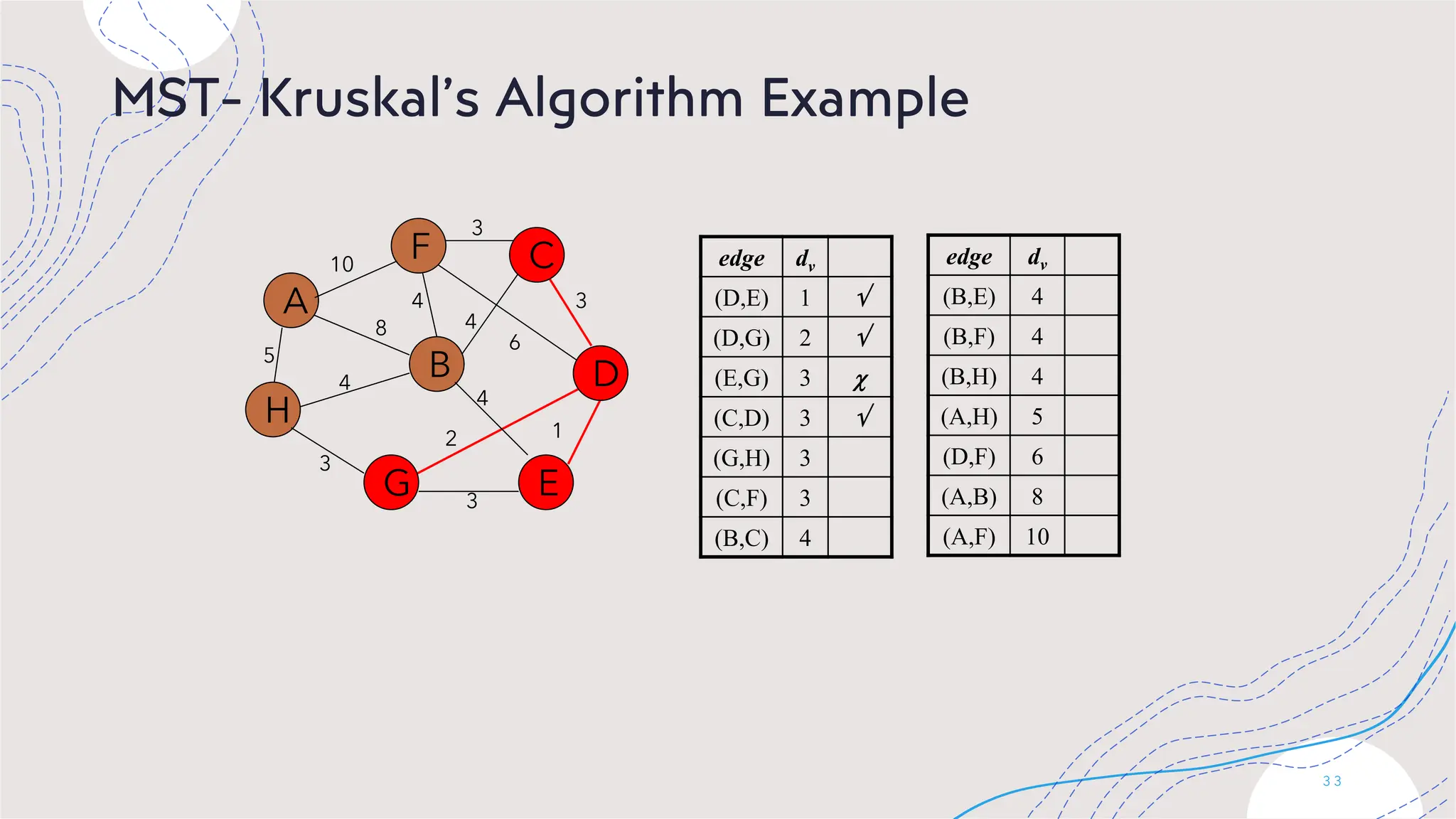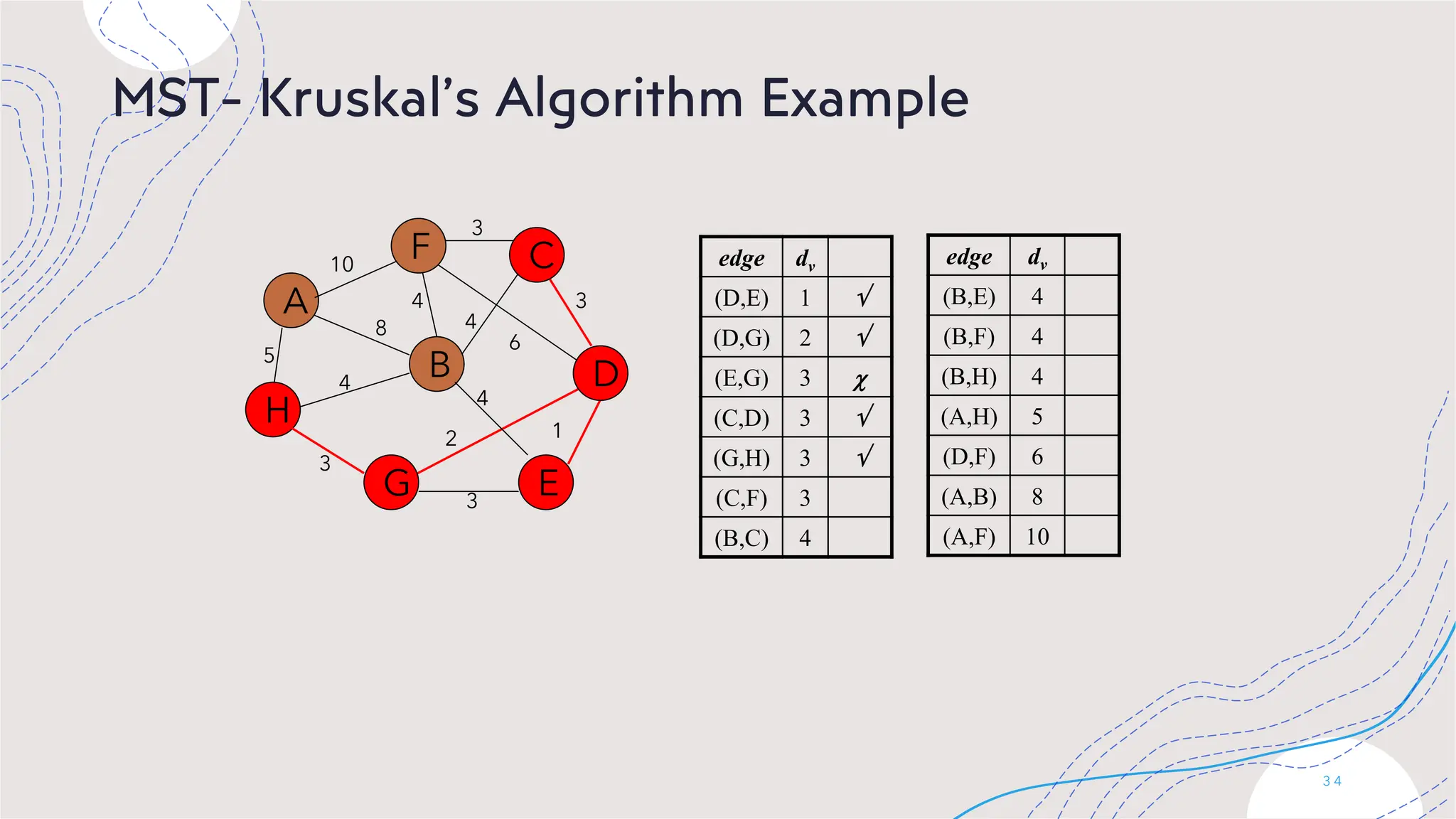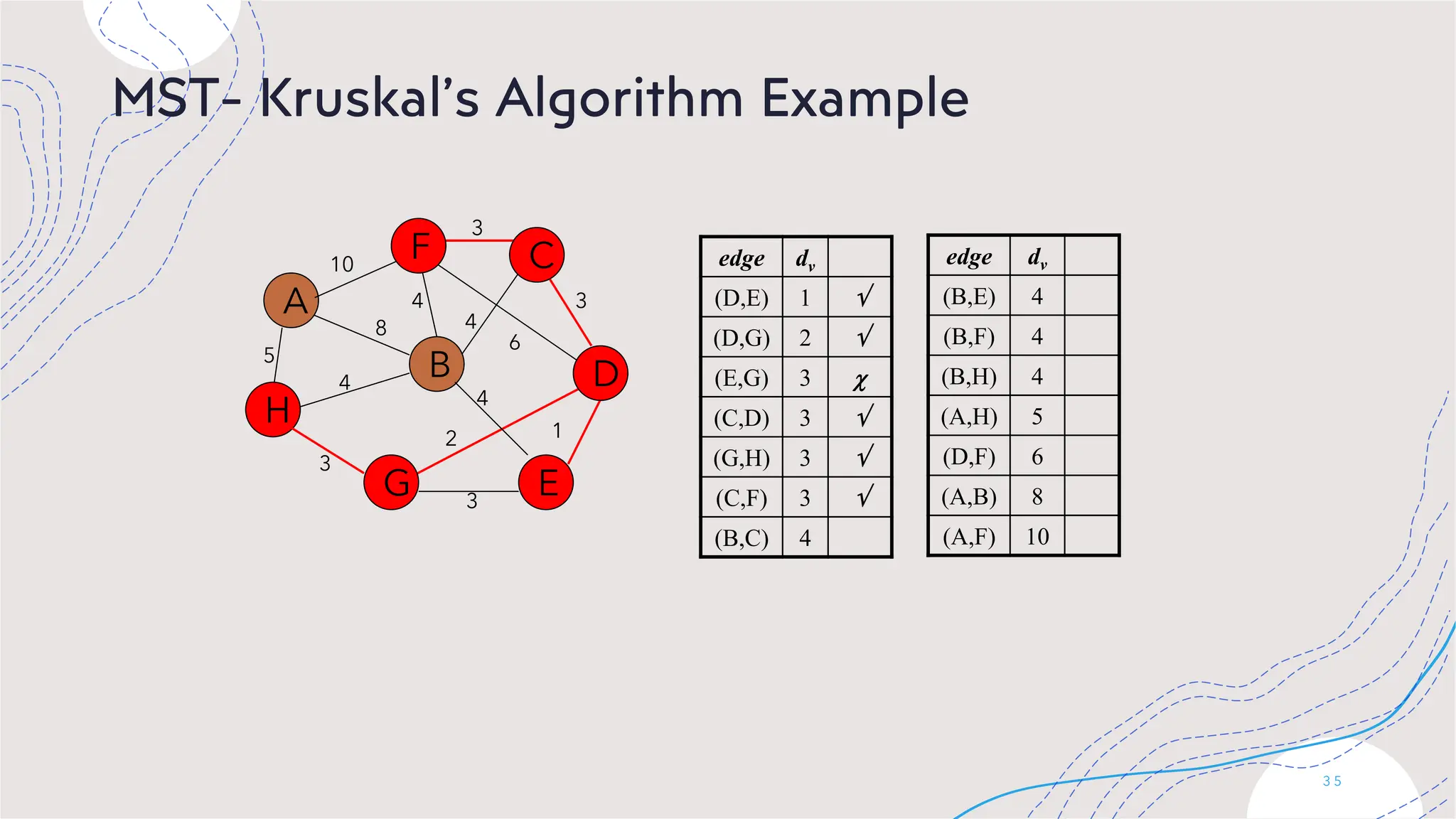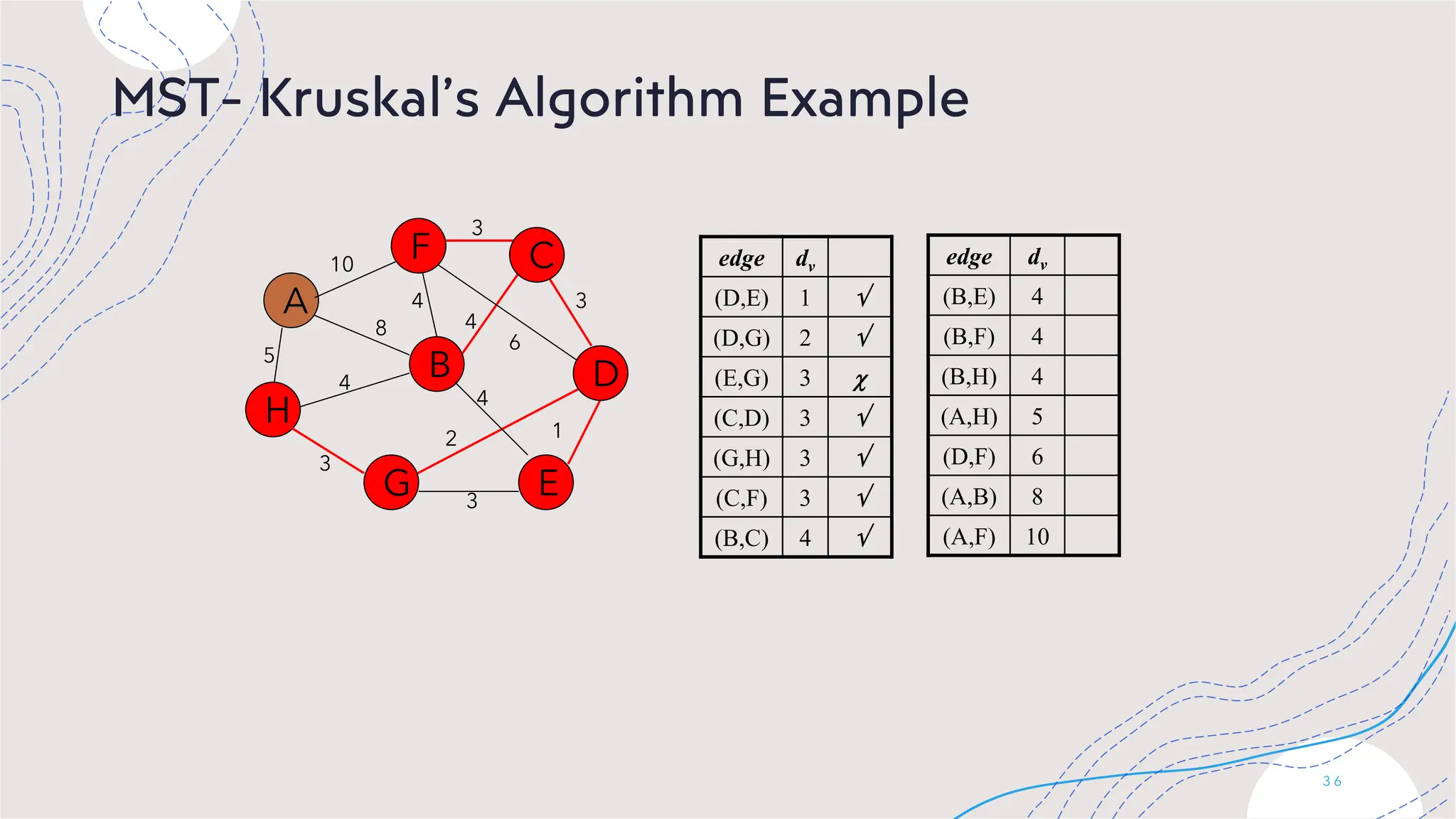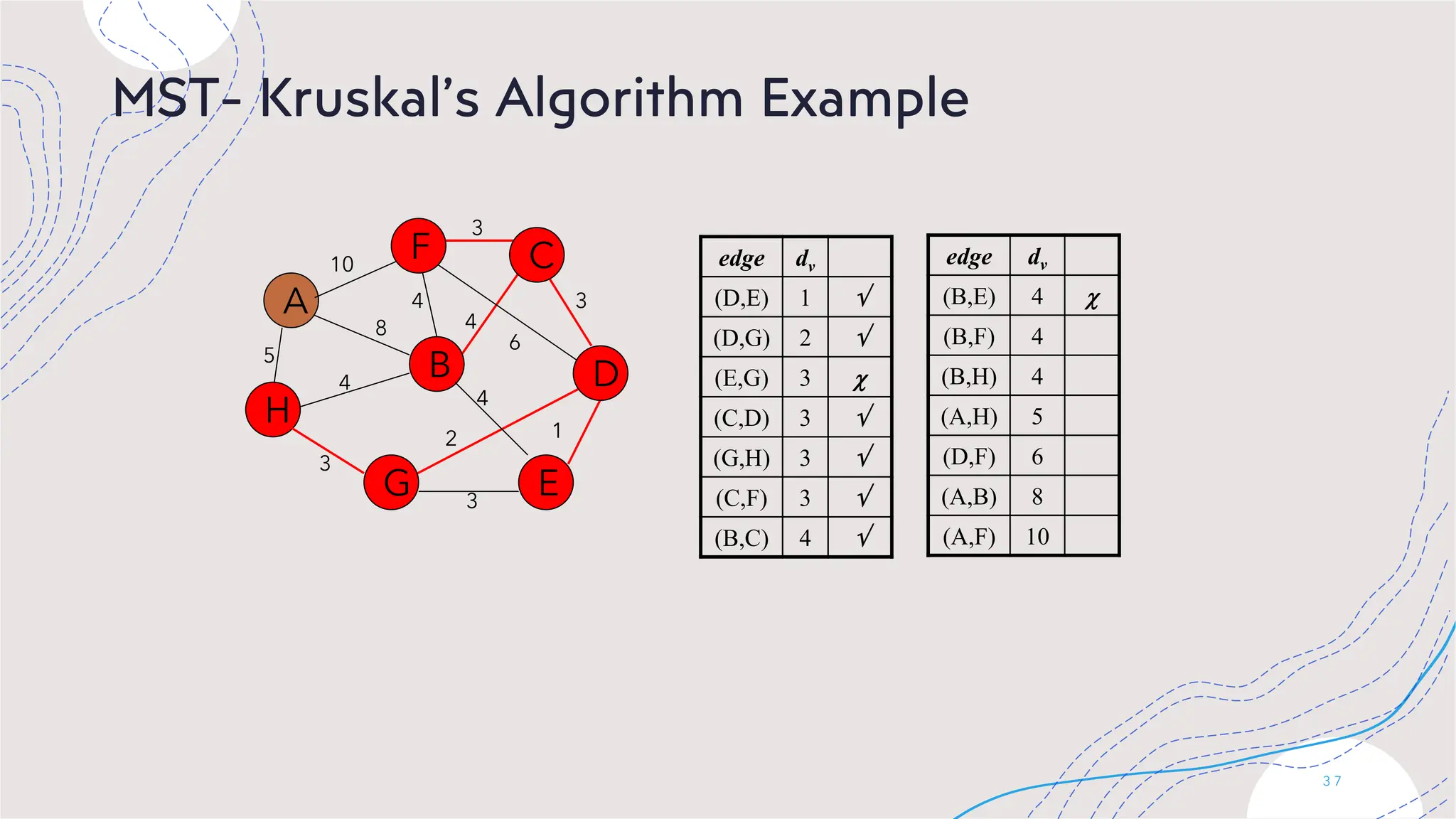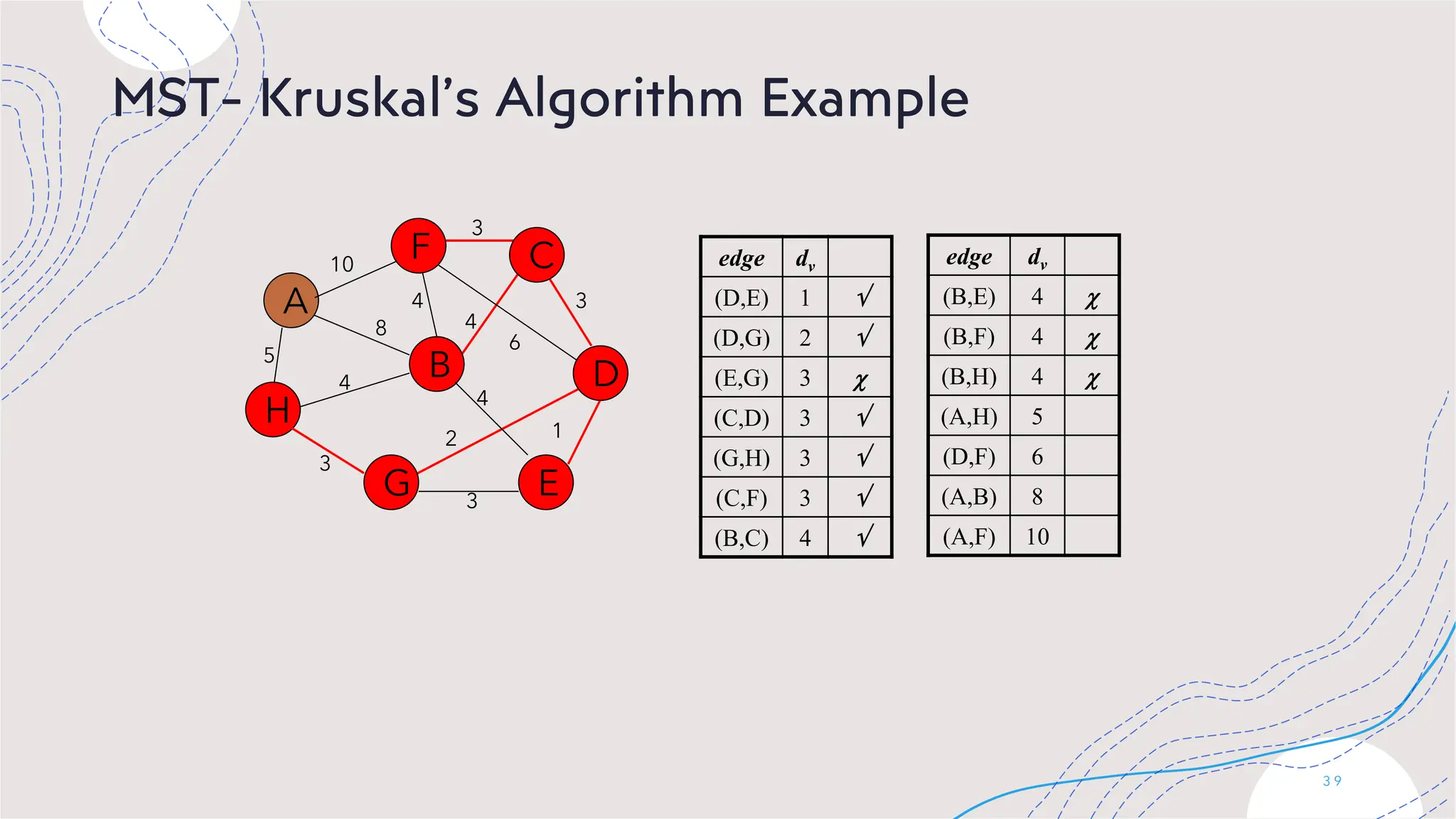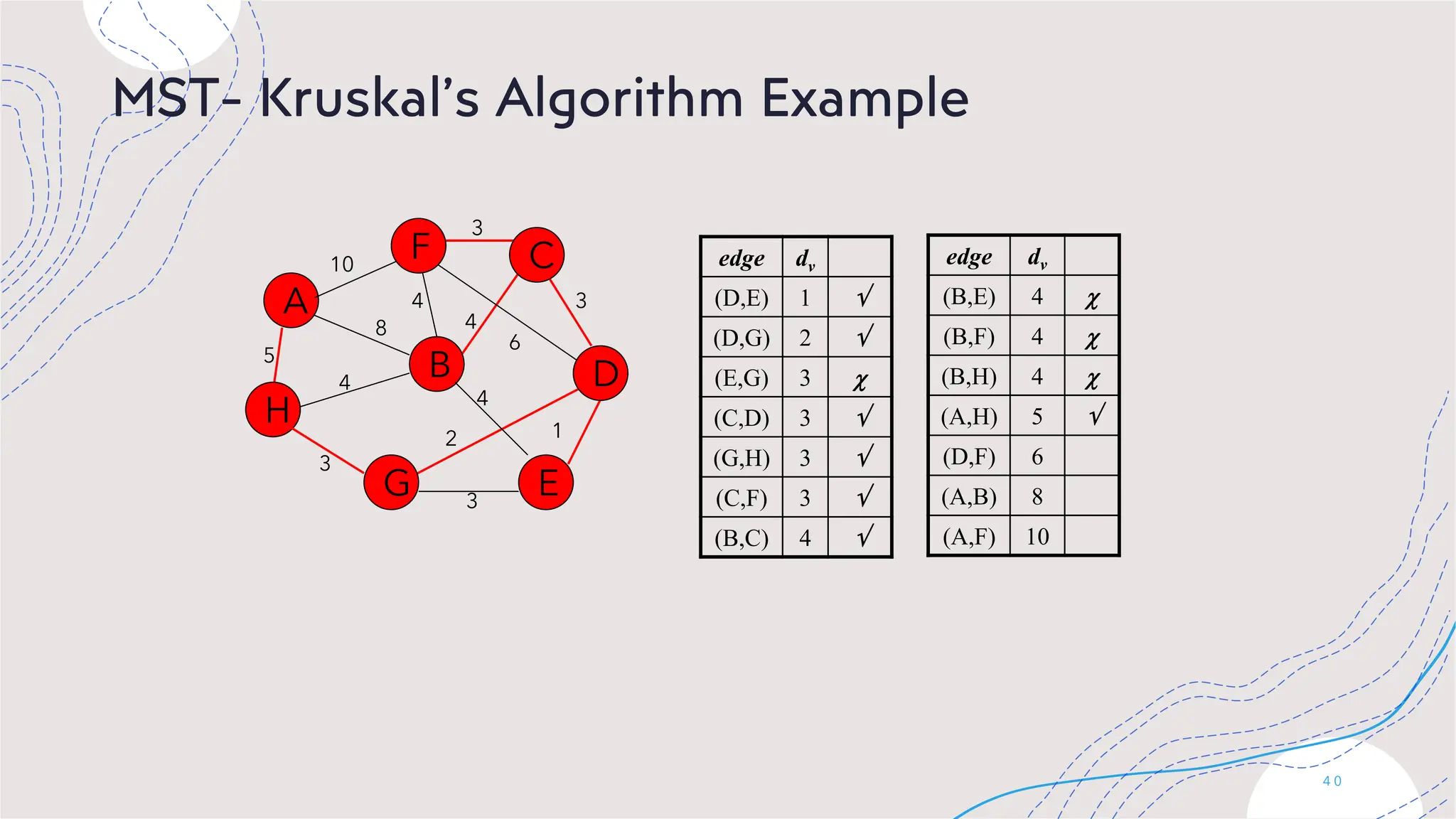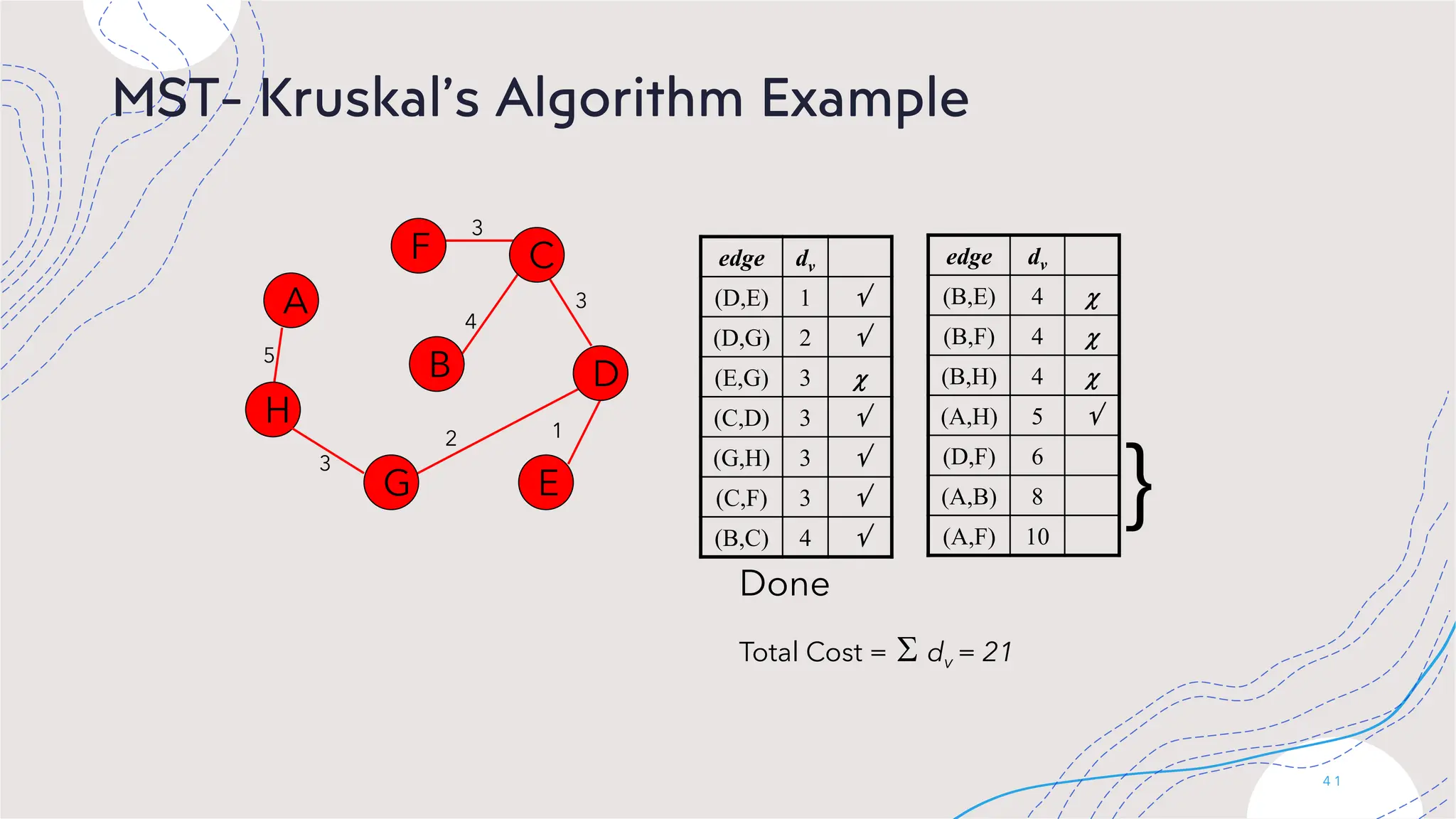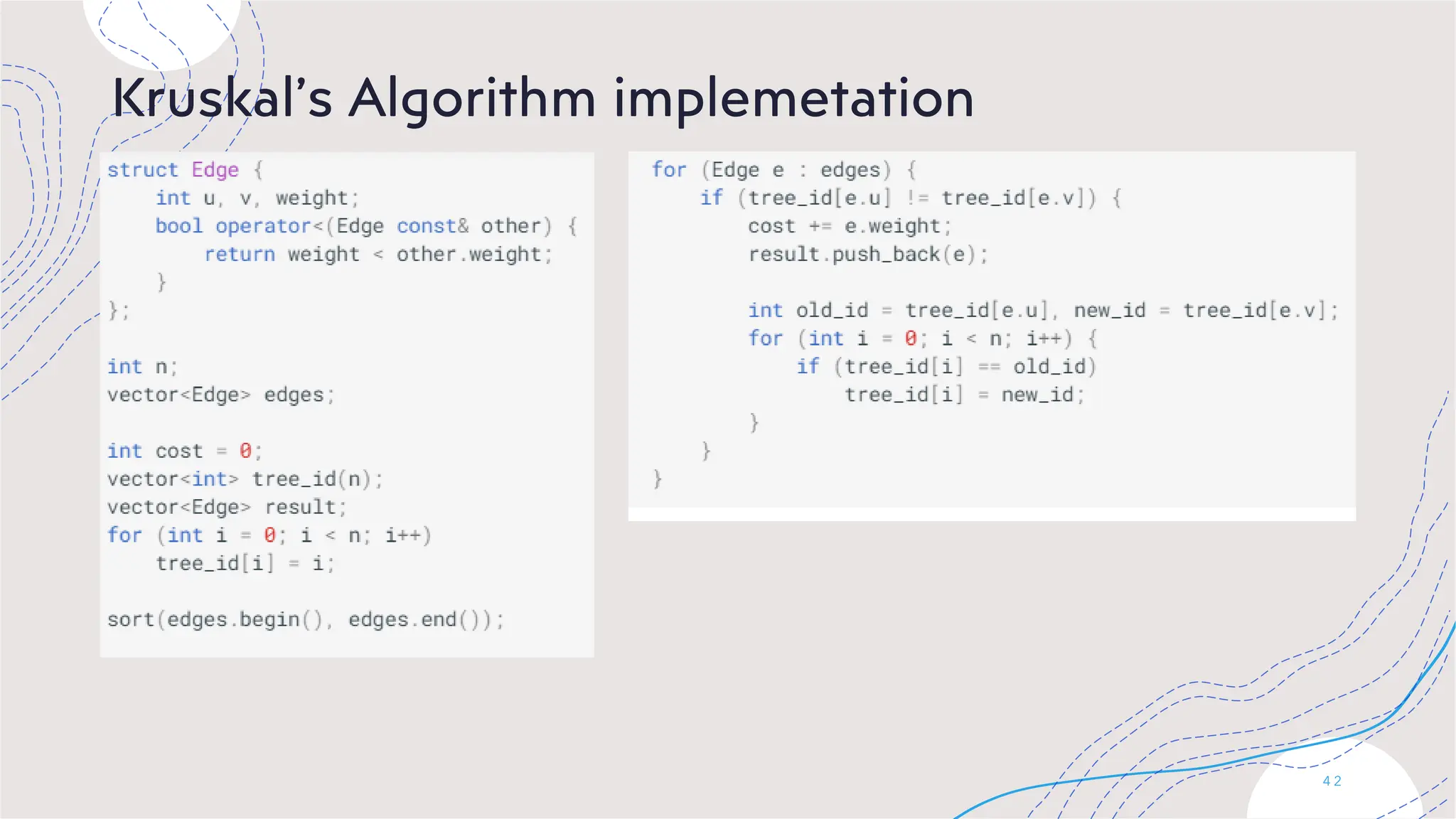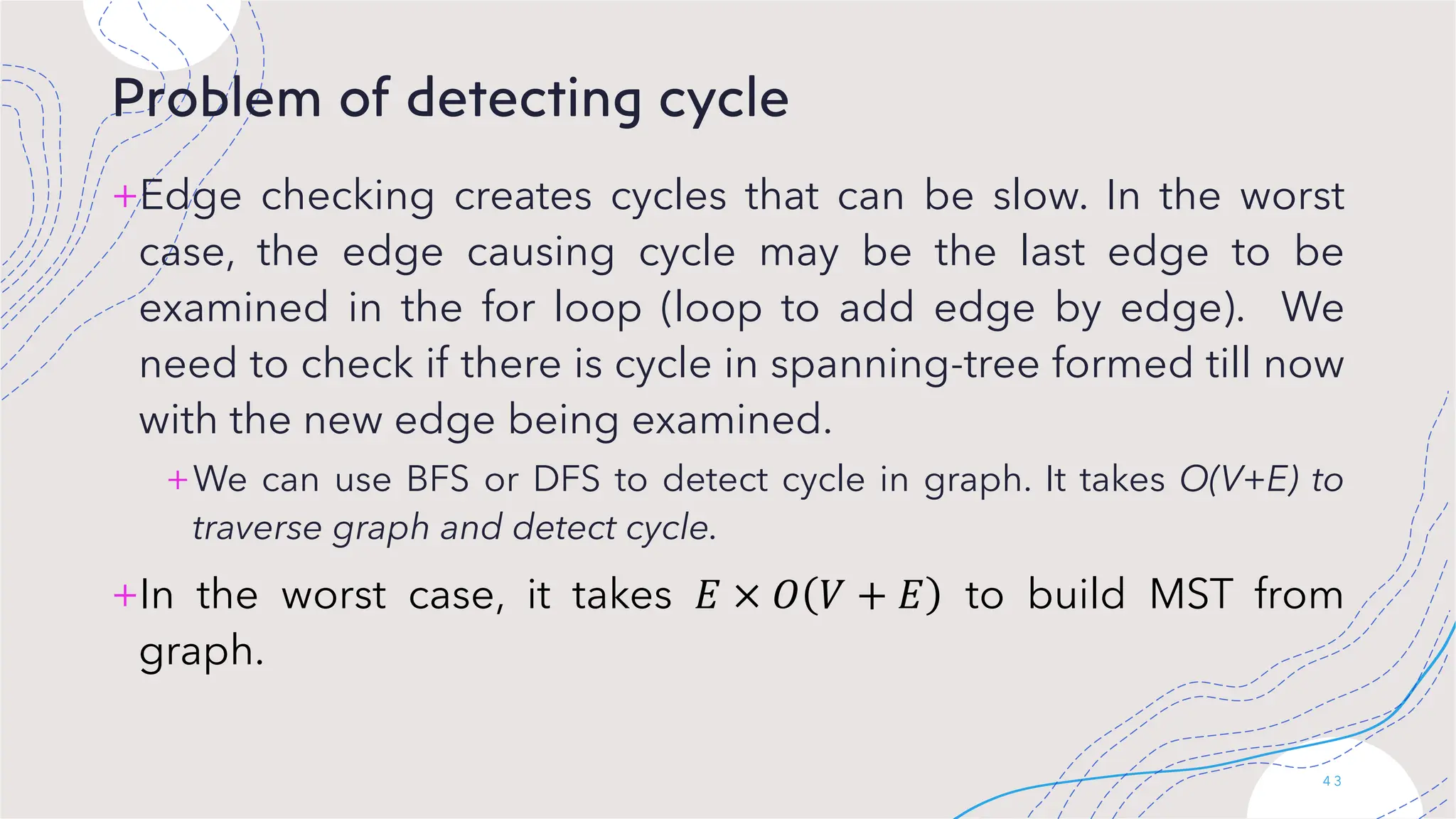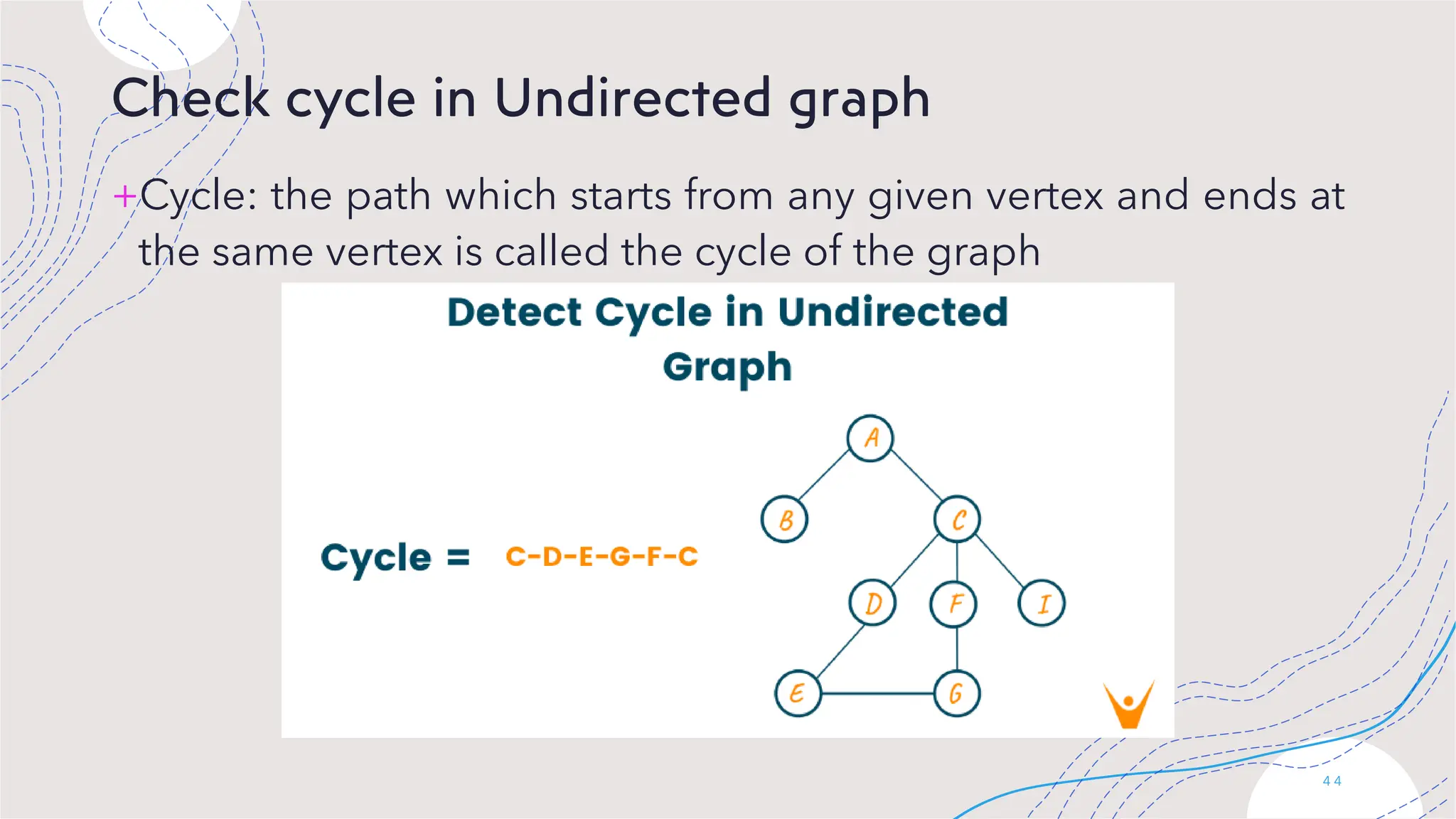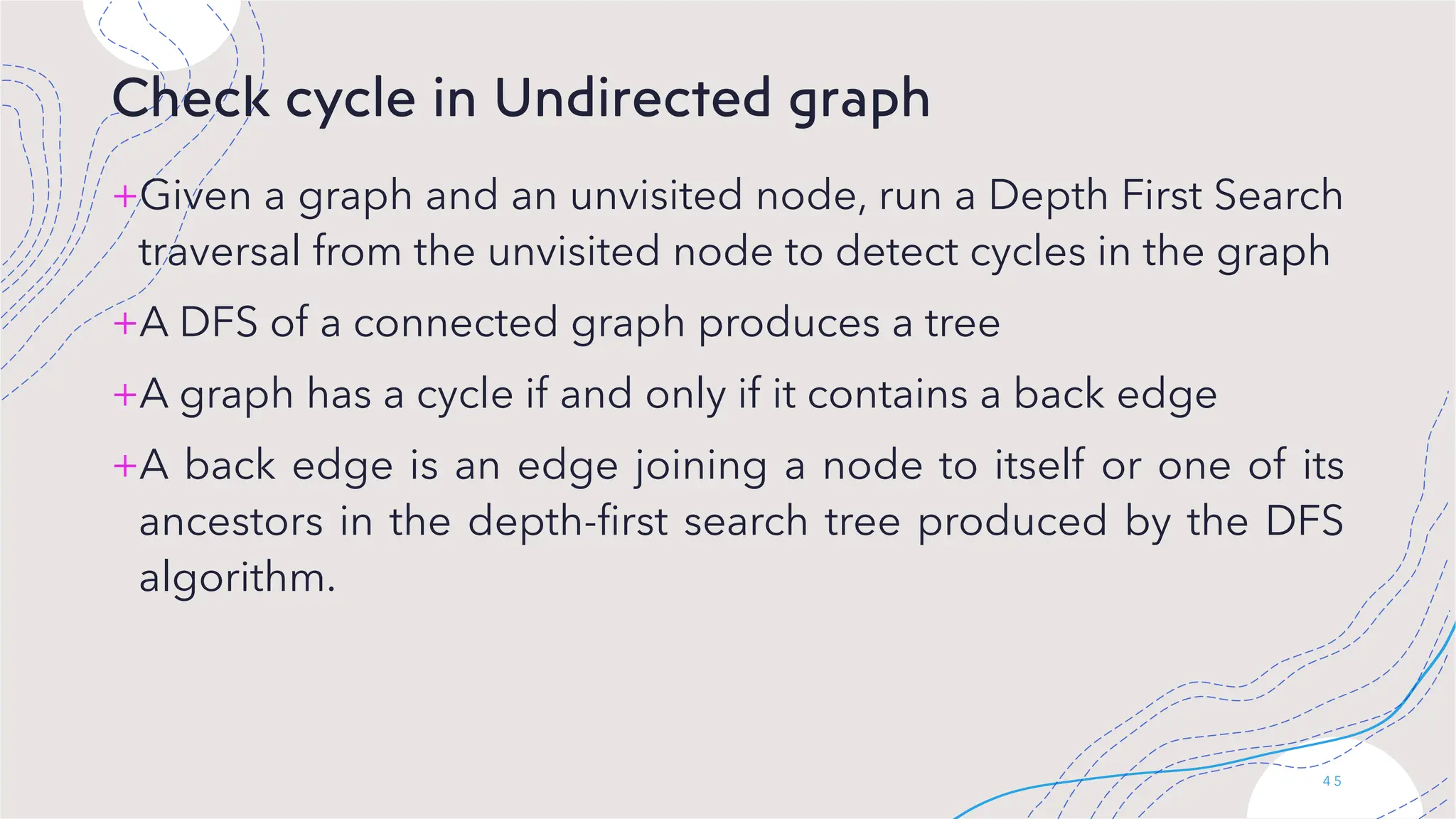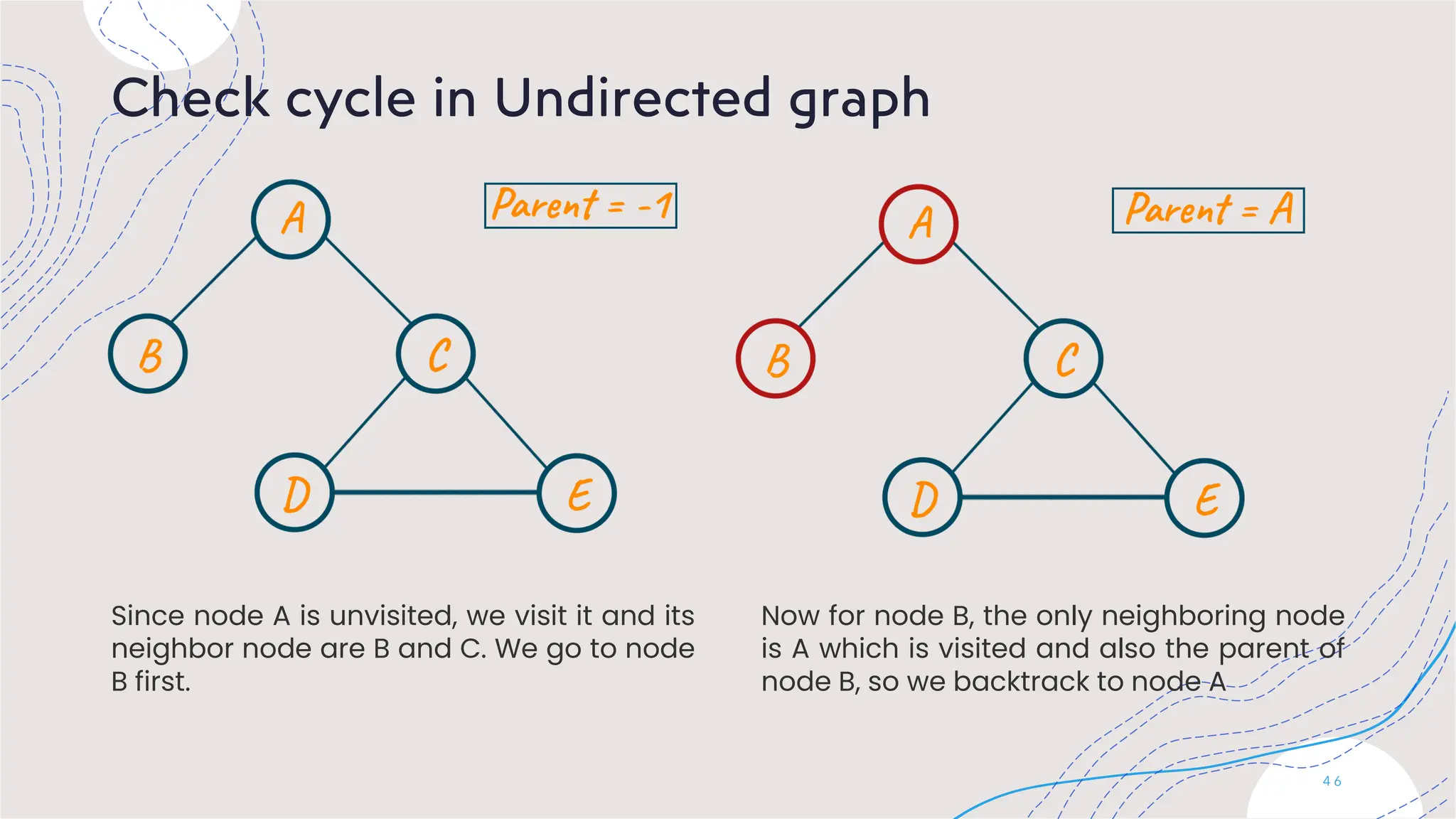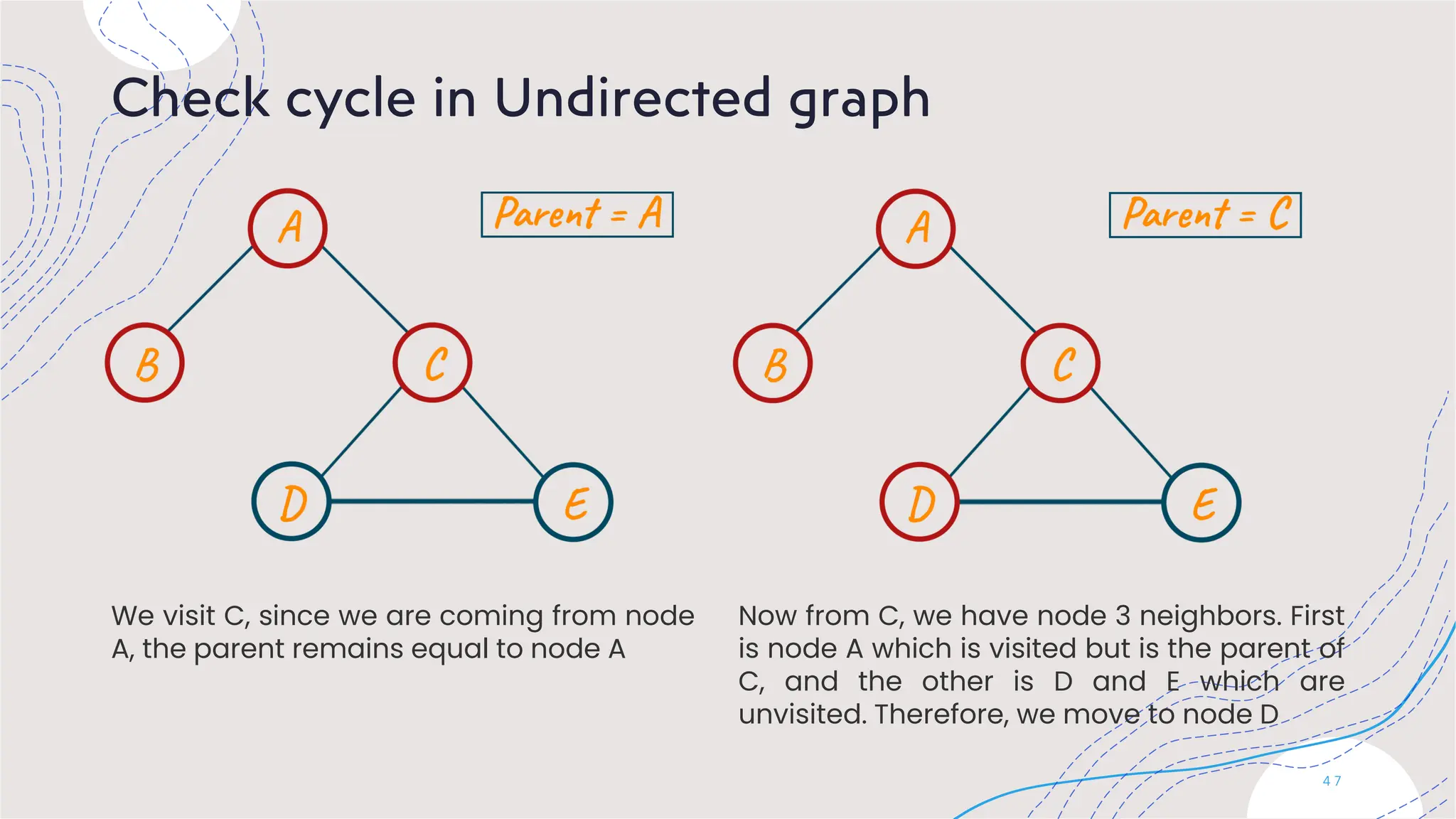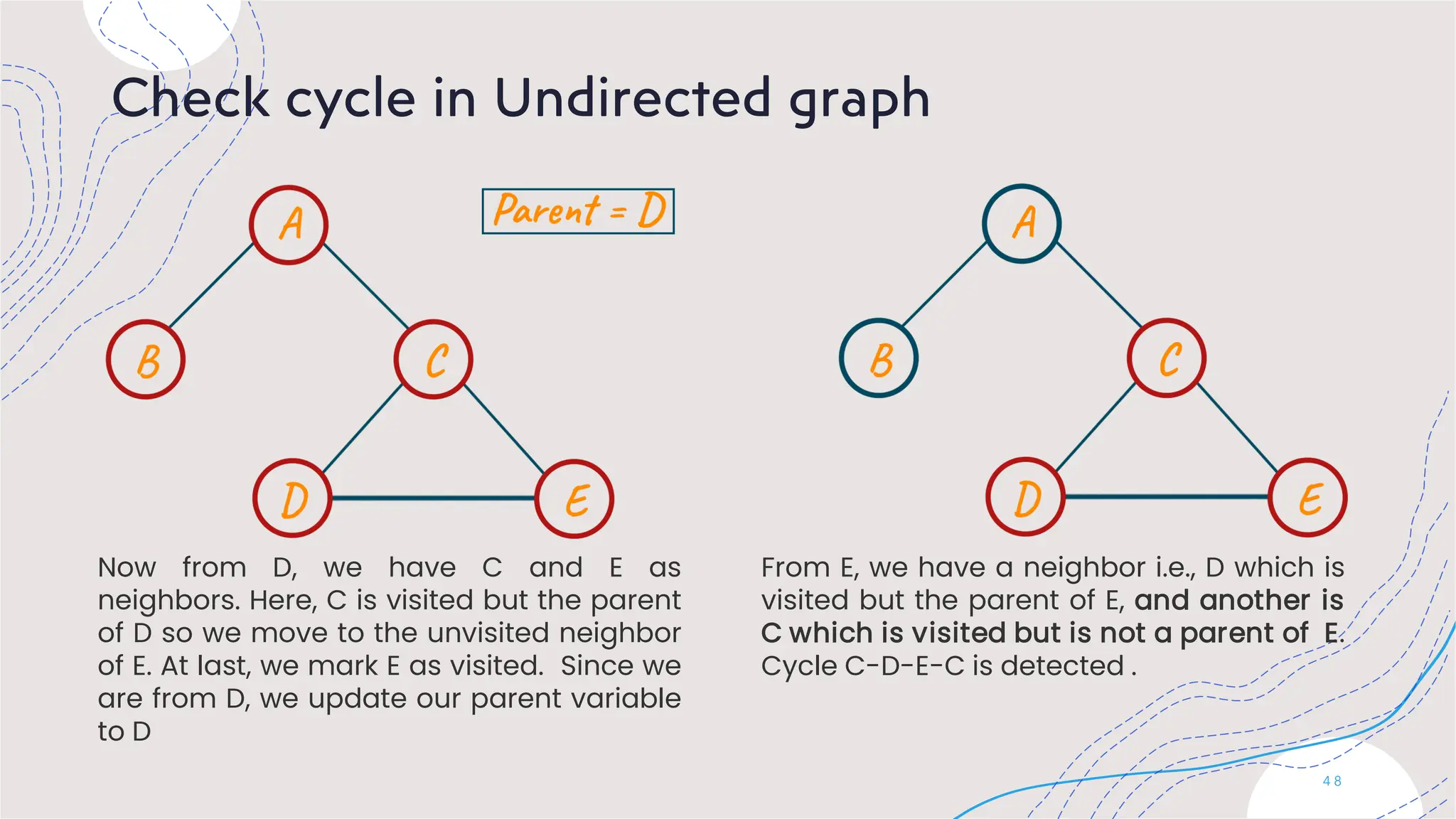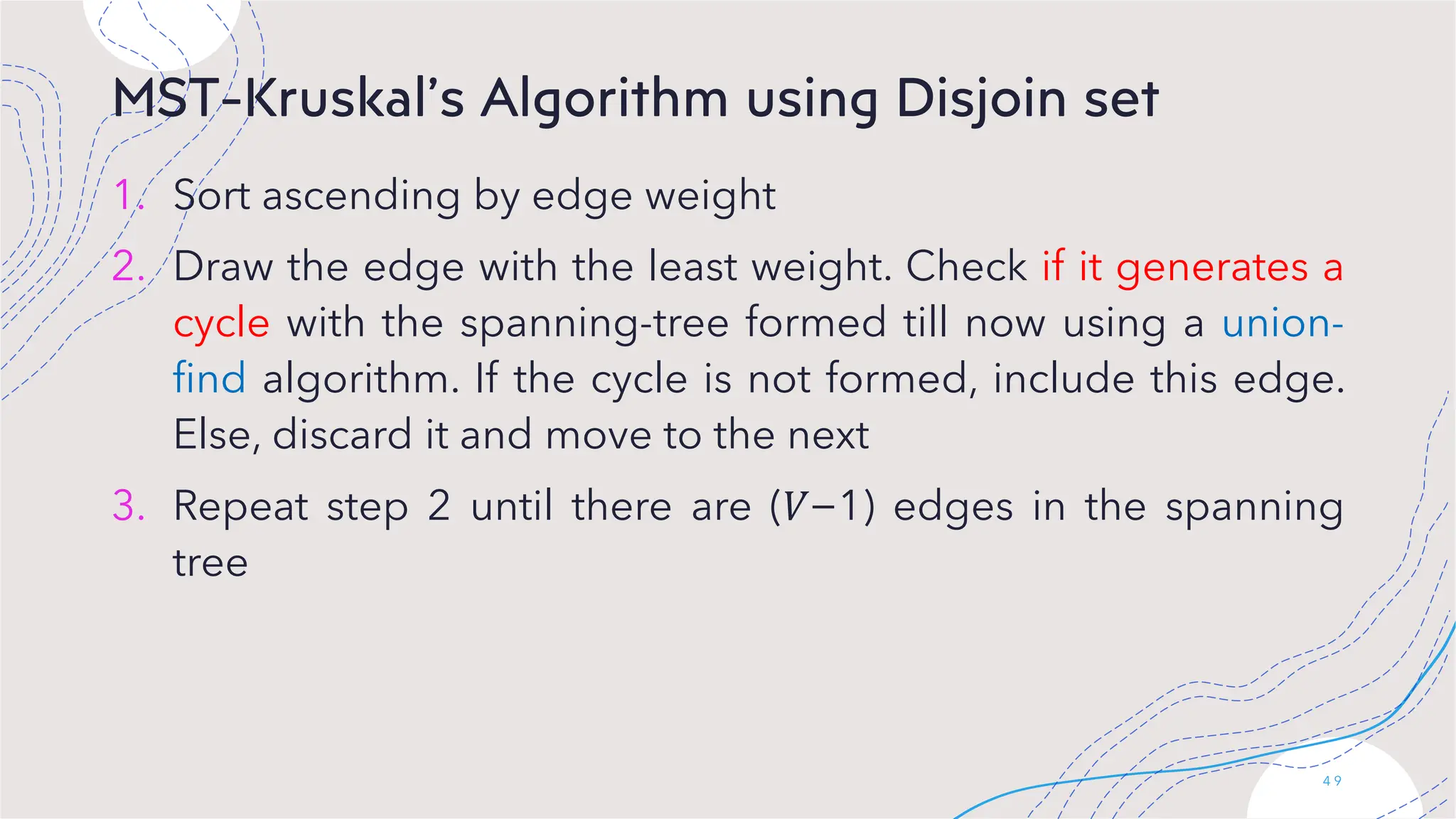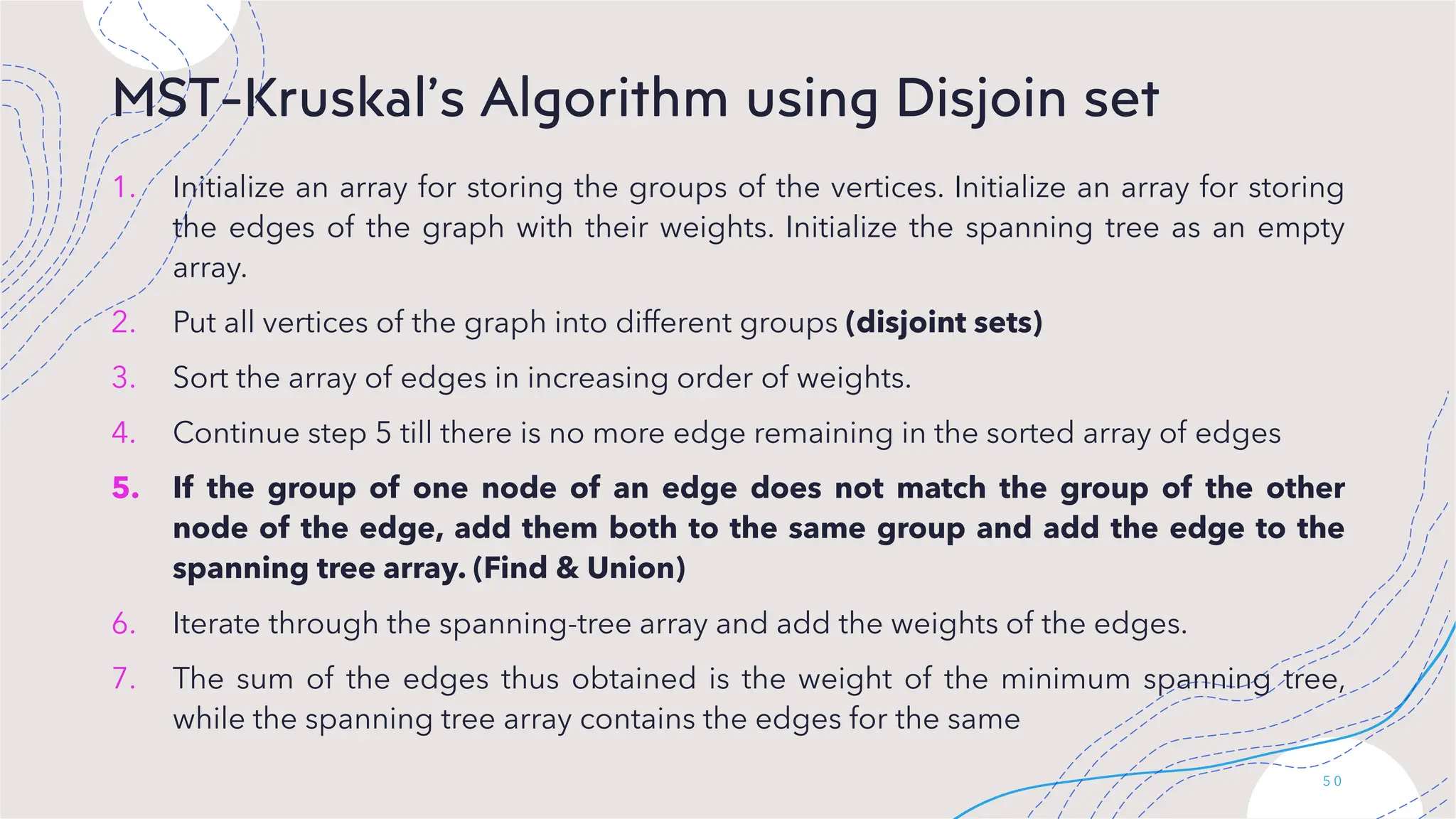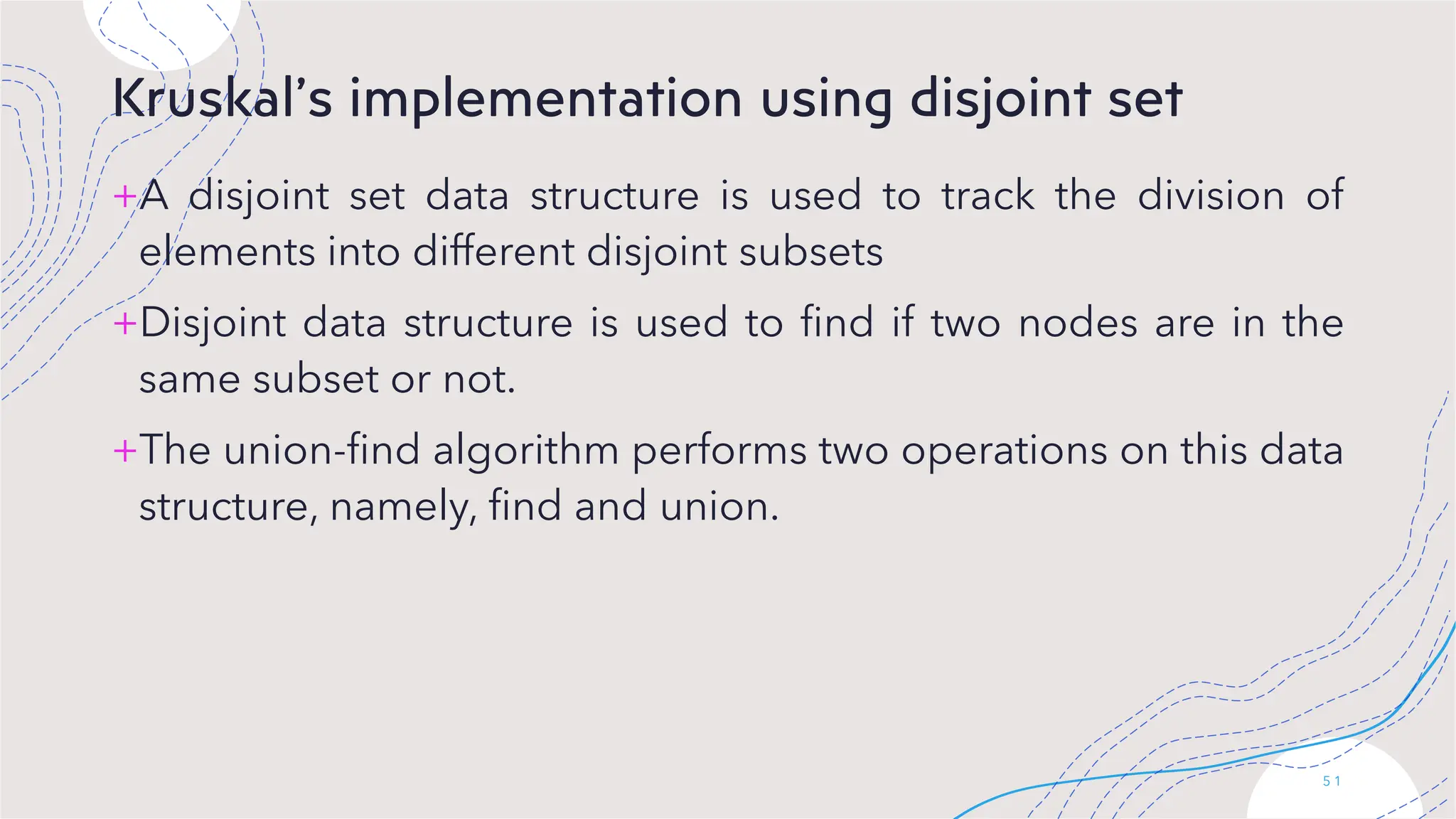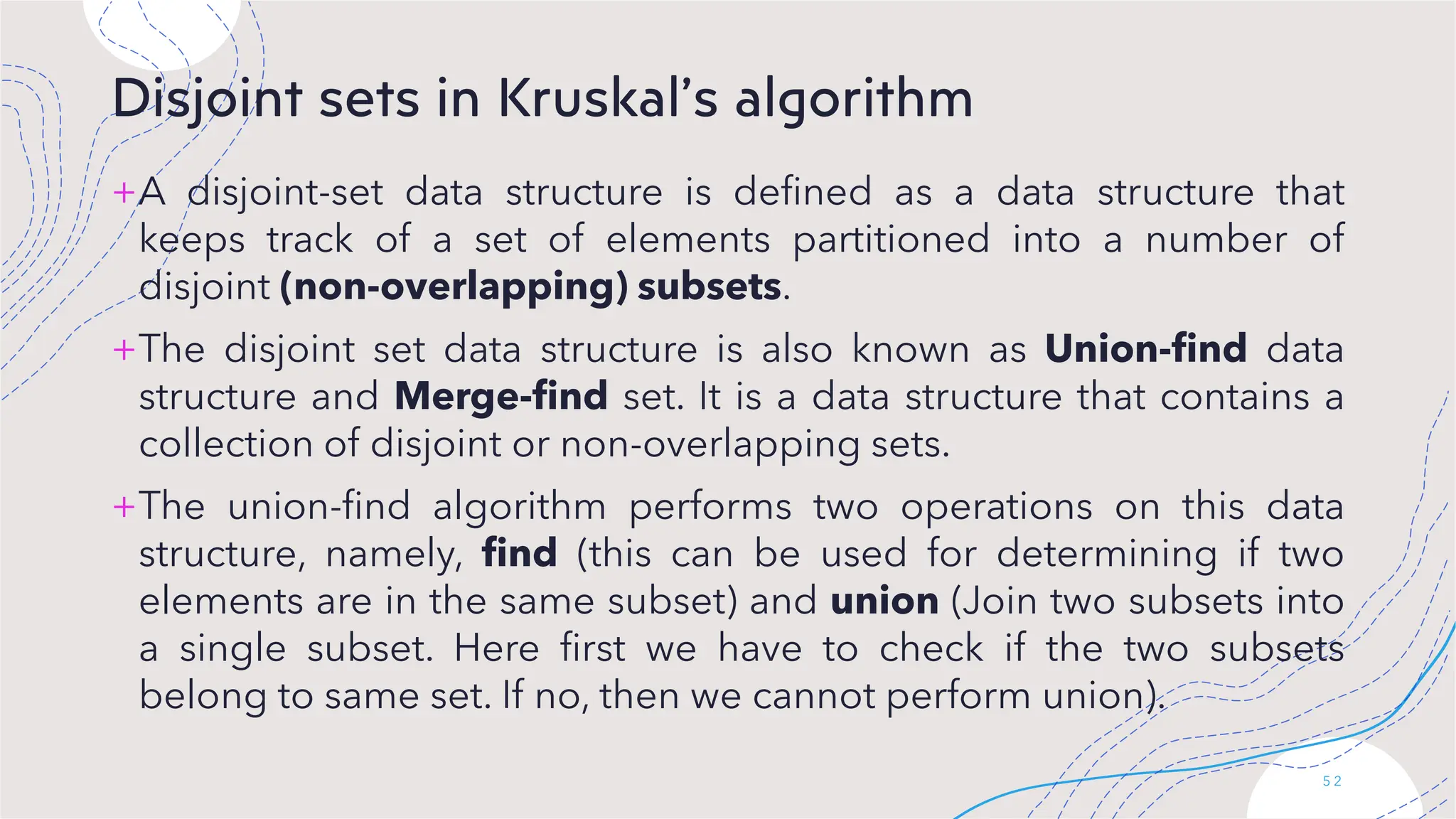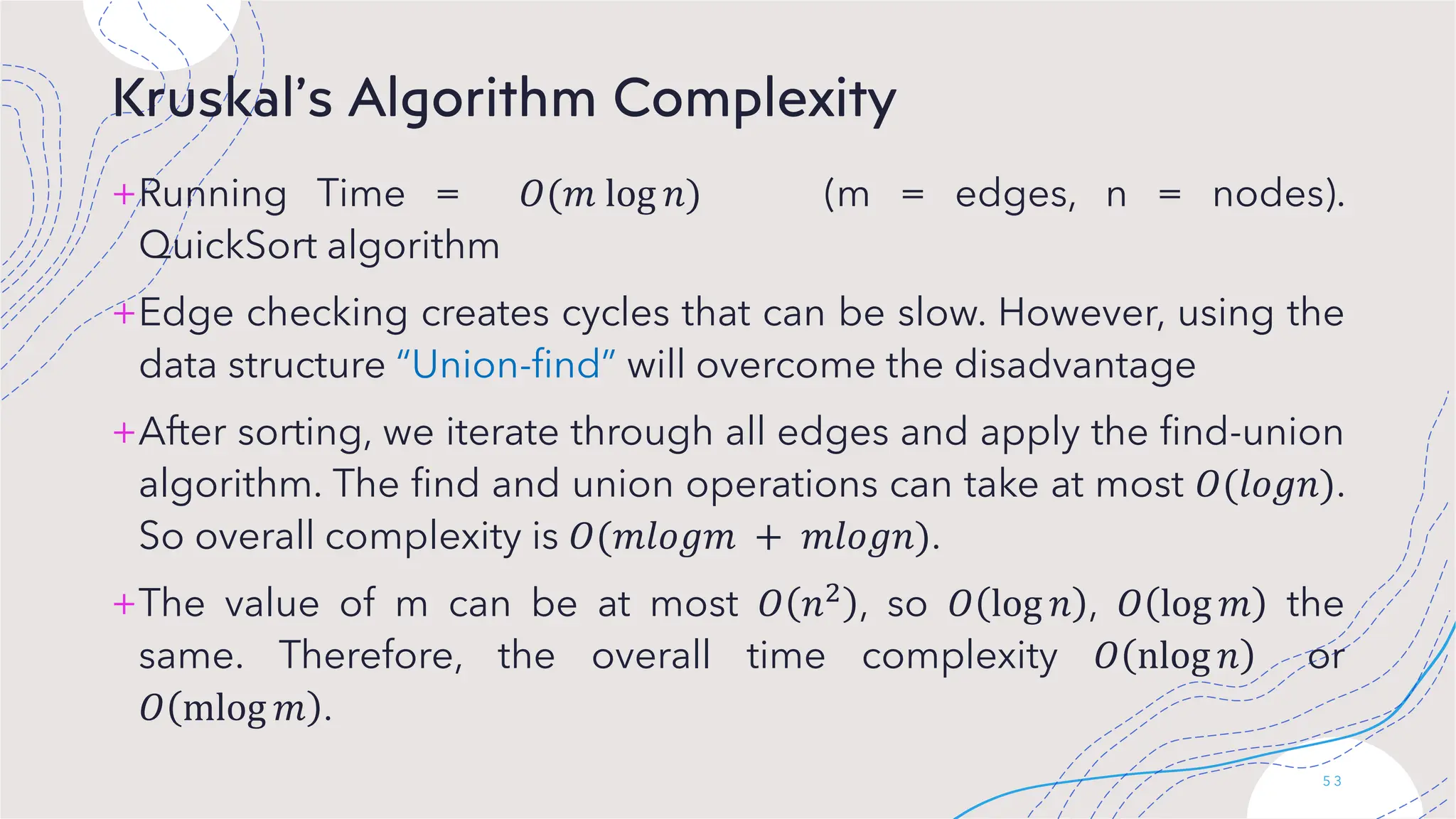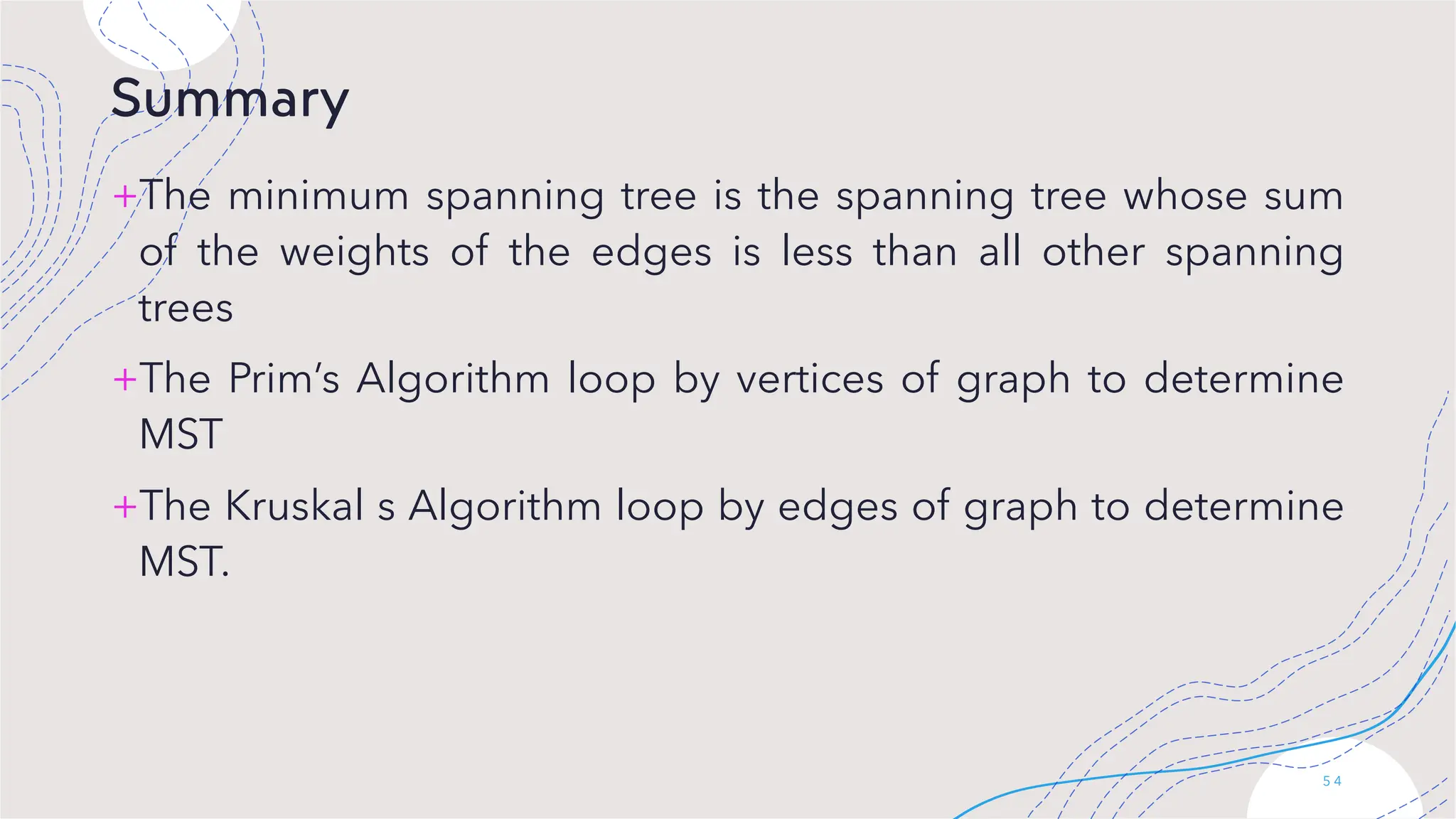The document discusses minimum spanning trees (MST) and the various algorithms used to find them, such as Kruskal's and Prim's algorithms. It elaborates on the concept of spanning trees, their mathematical properties, applications in network design, clustering, and graph-related problems, along with implementation details in programming languages like C++ and Python. Additionally, it provides a step-by-step breakdown of the algorithms and their complexity.

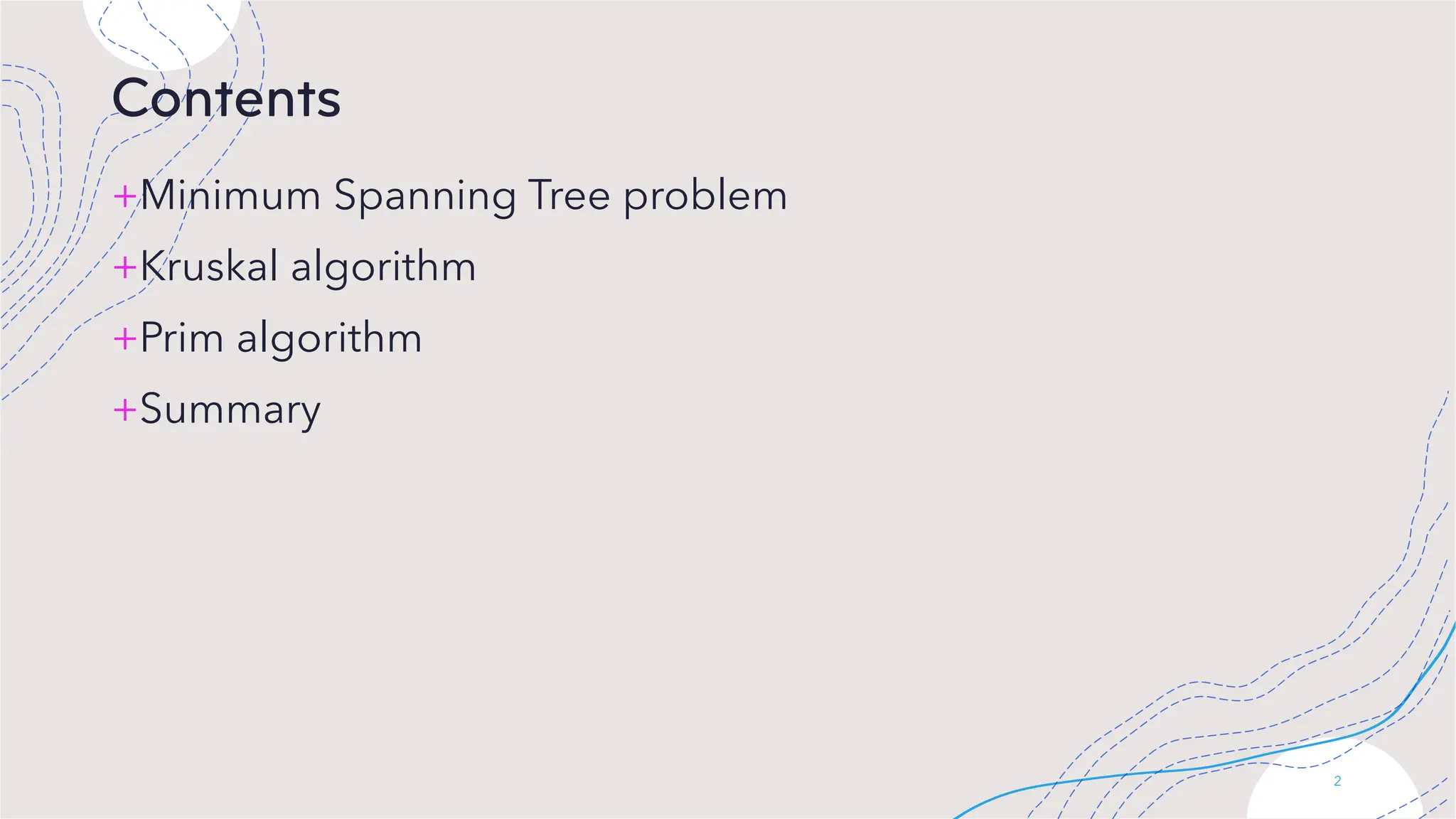
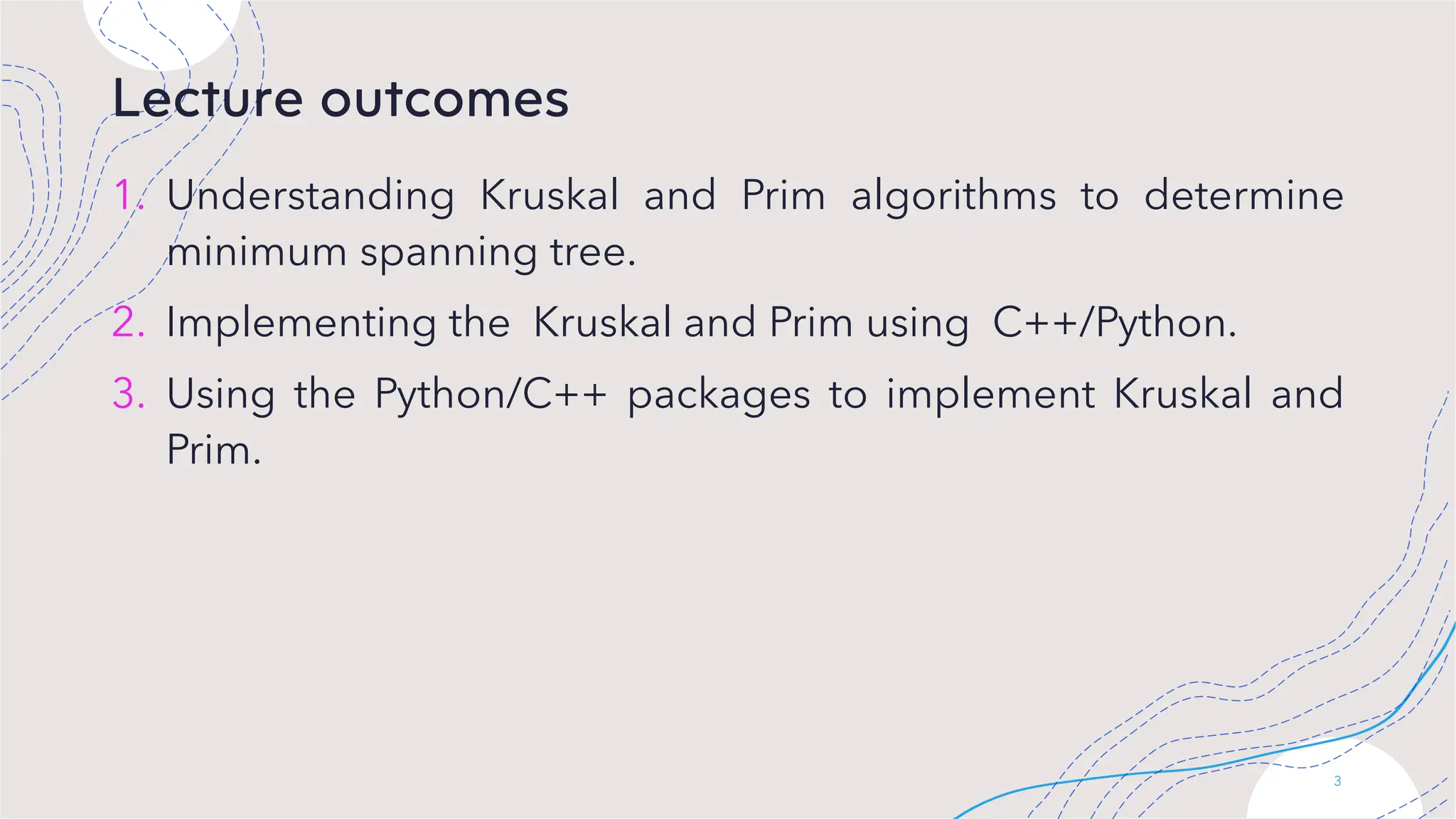
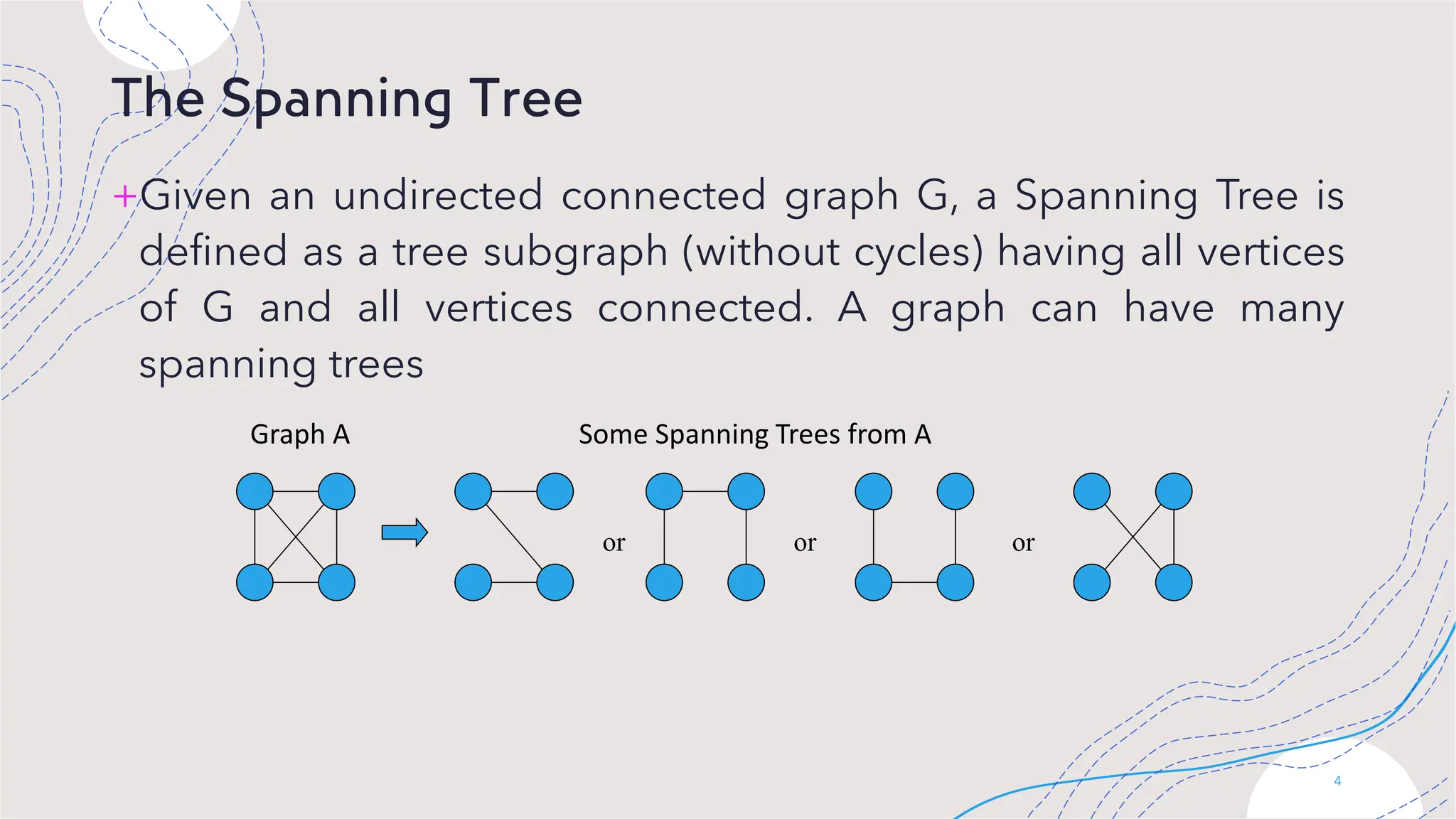
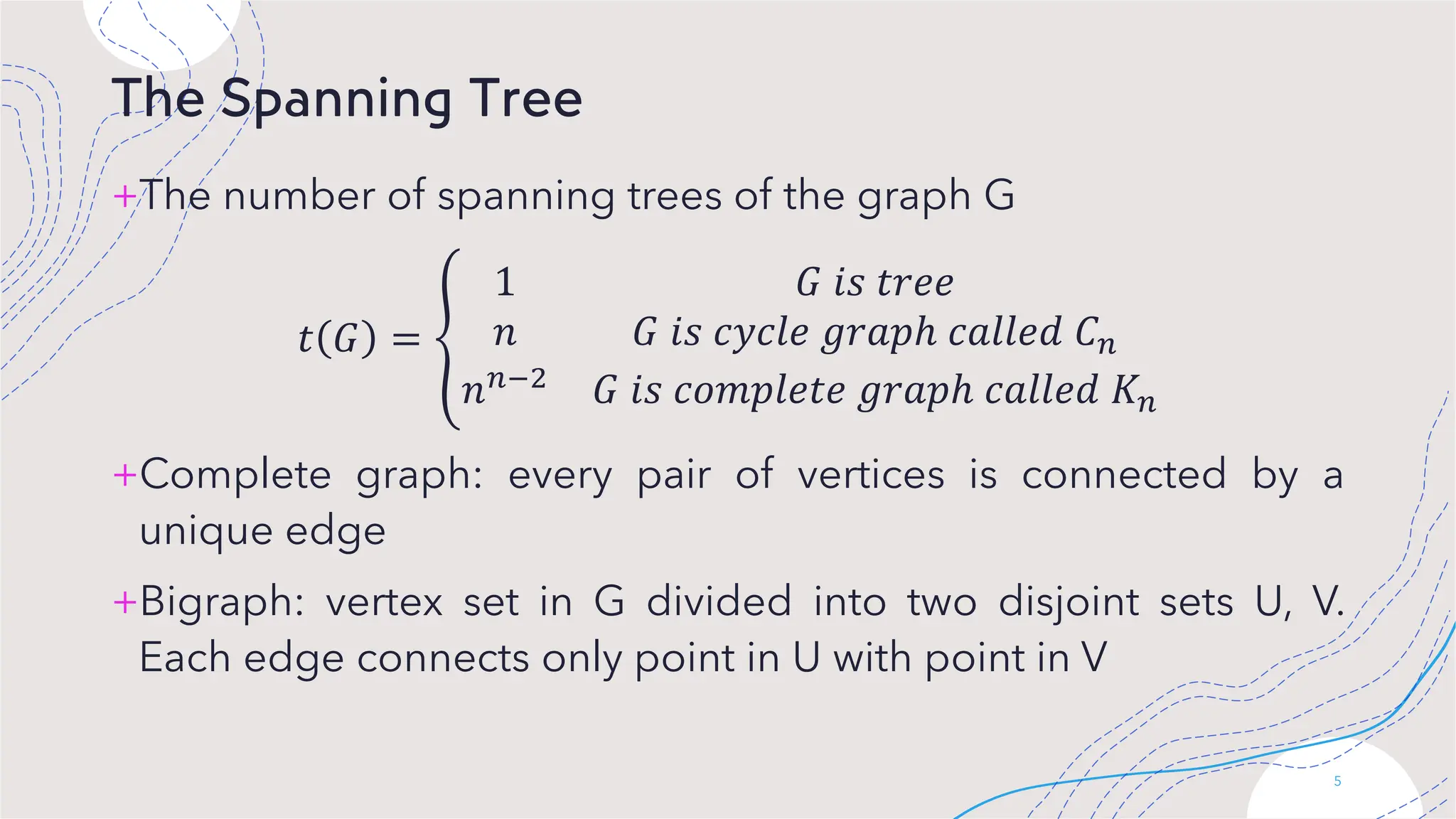
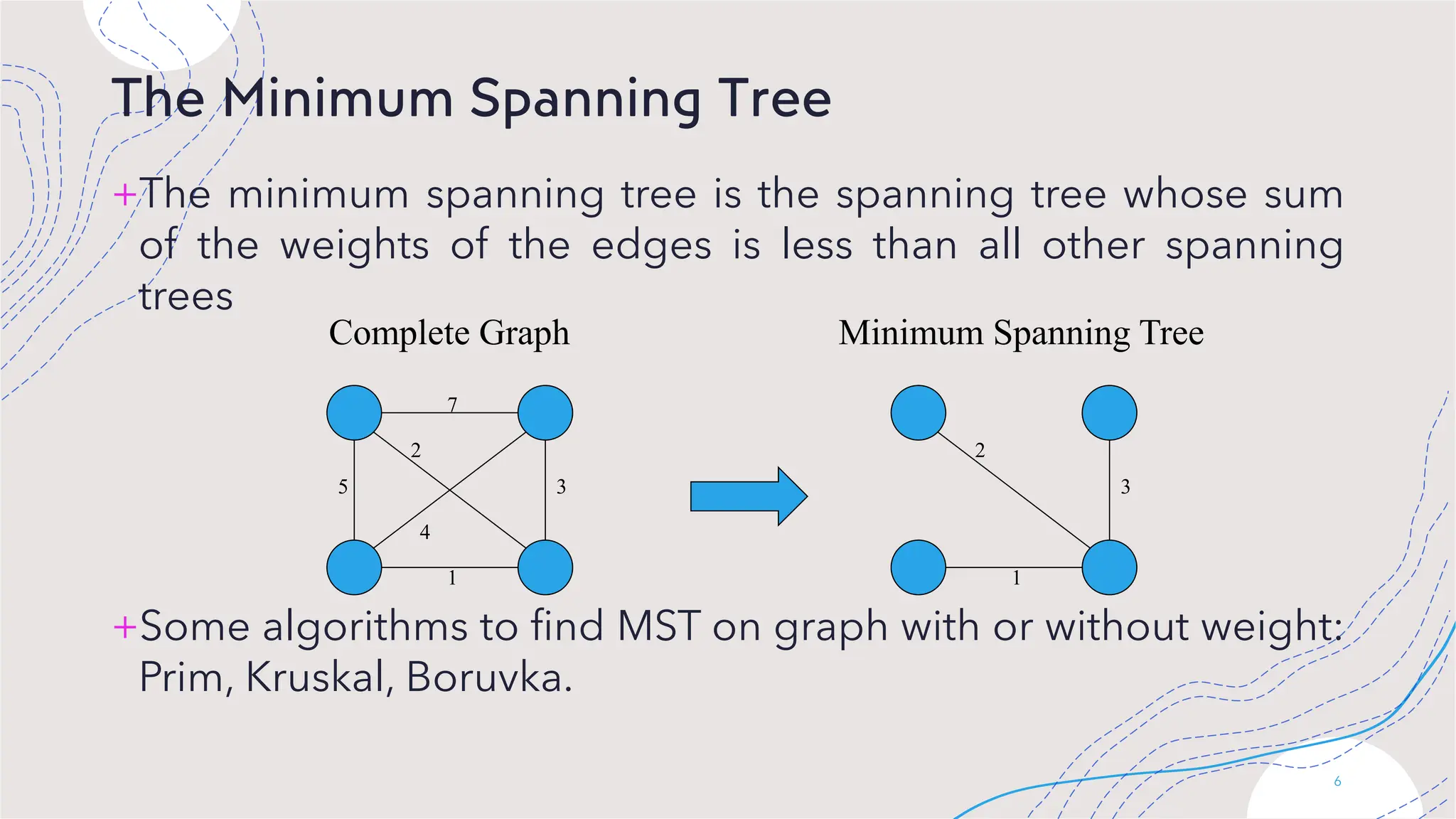

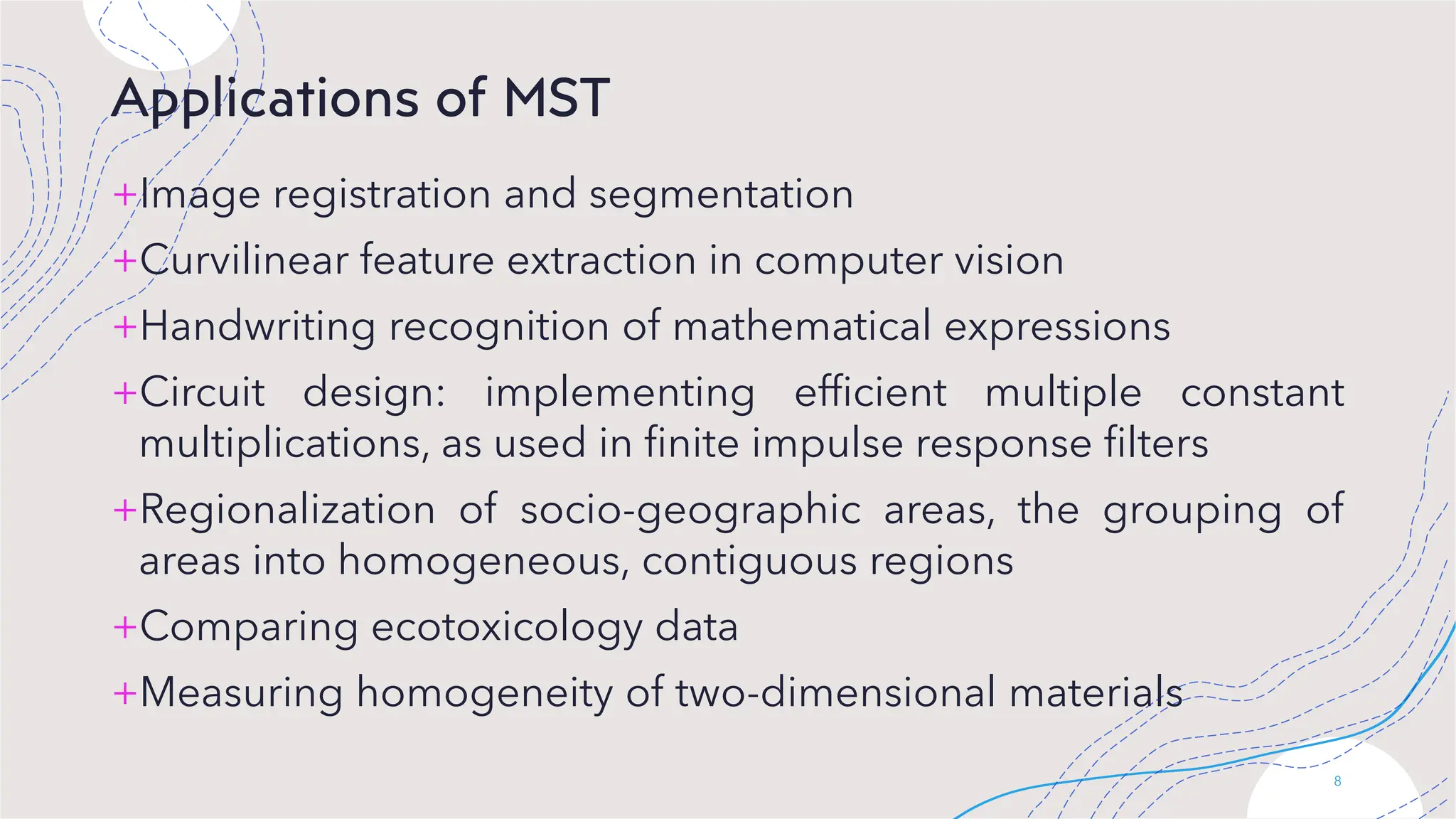
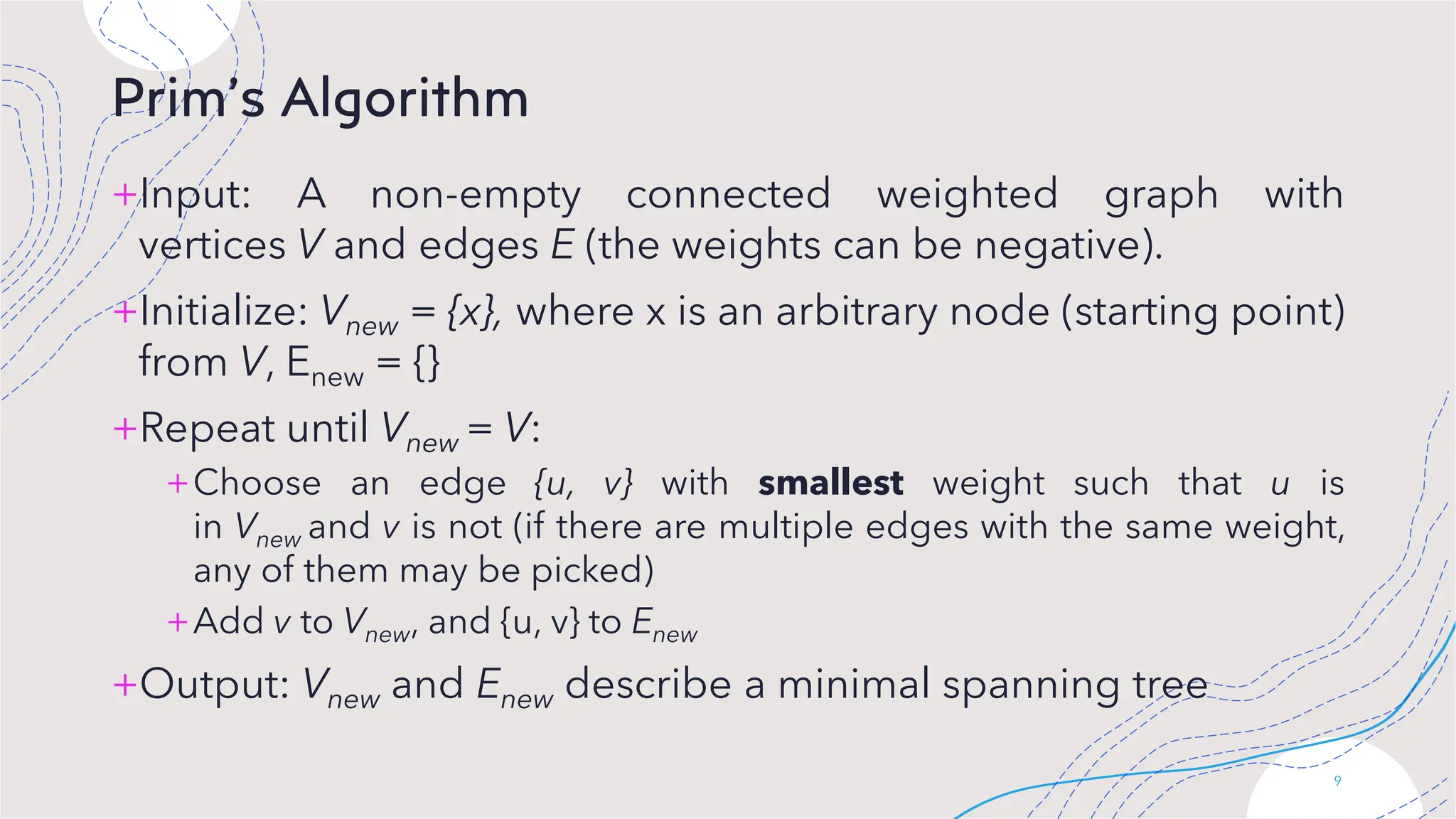
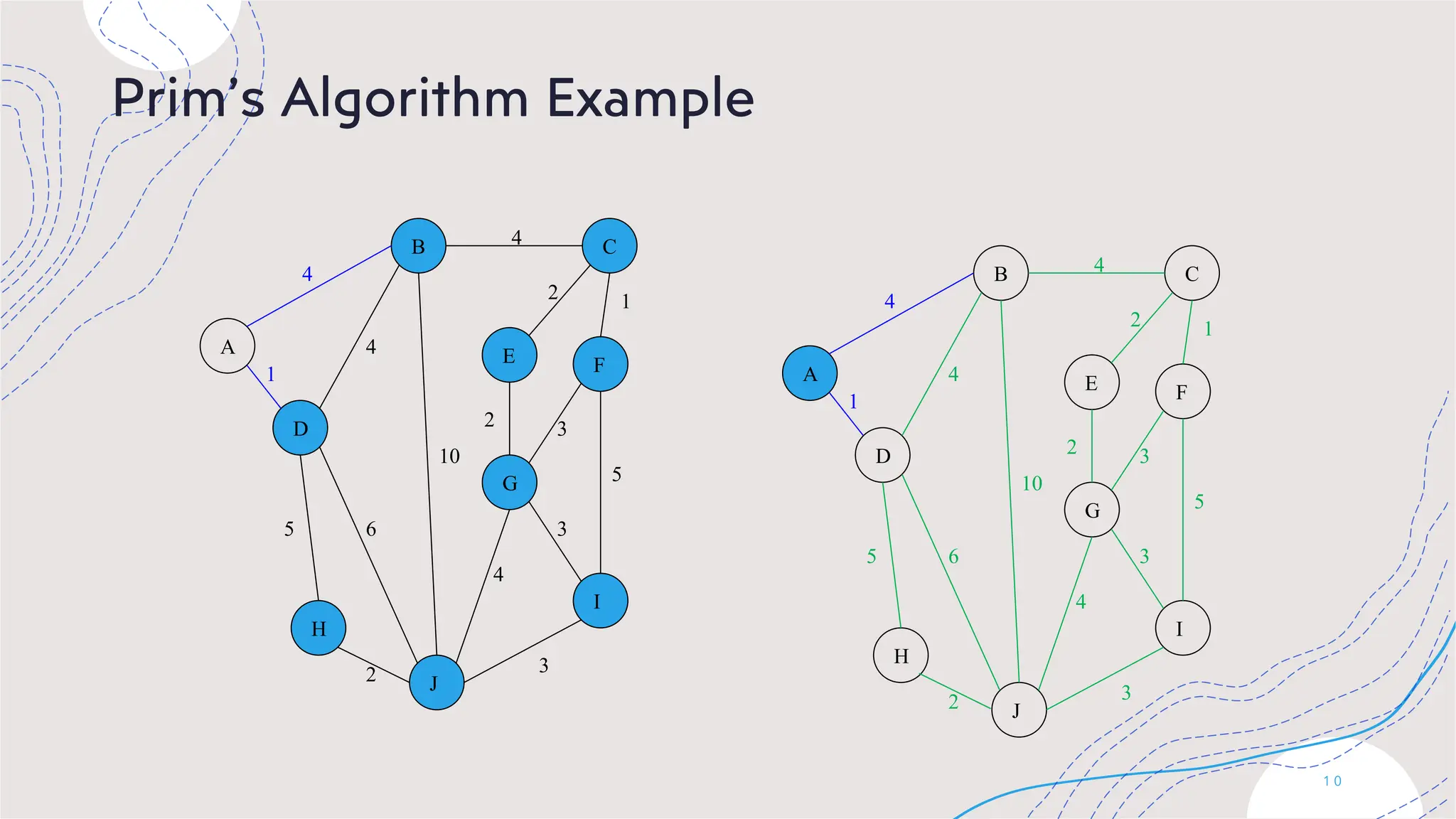
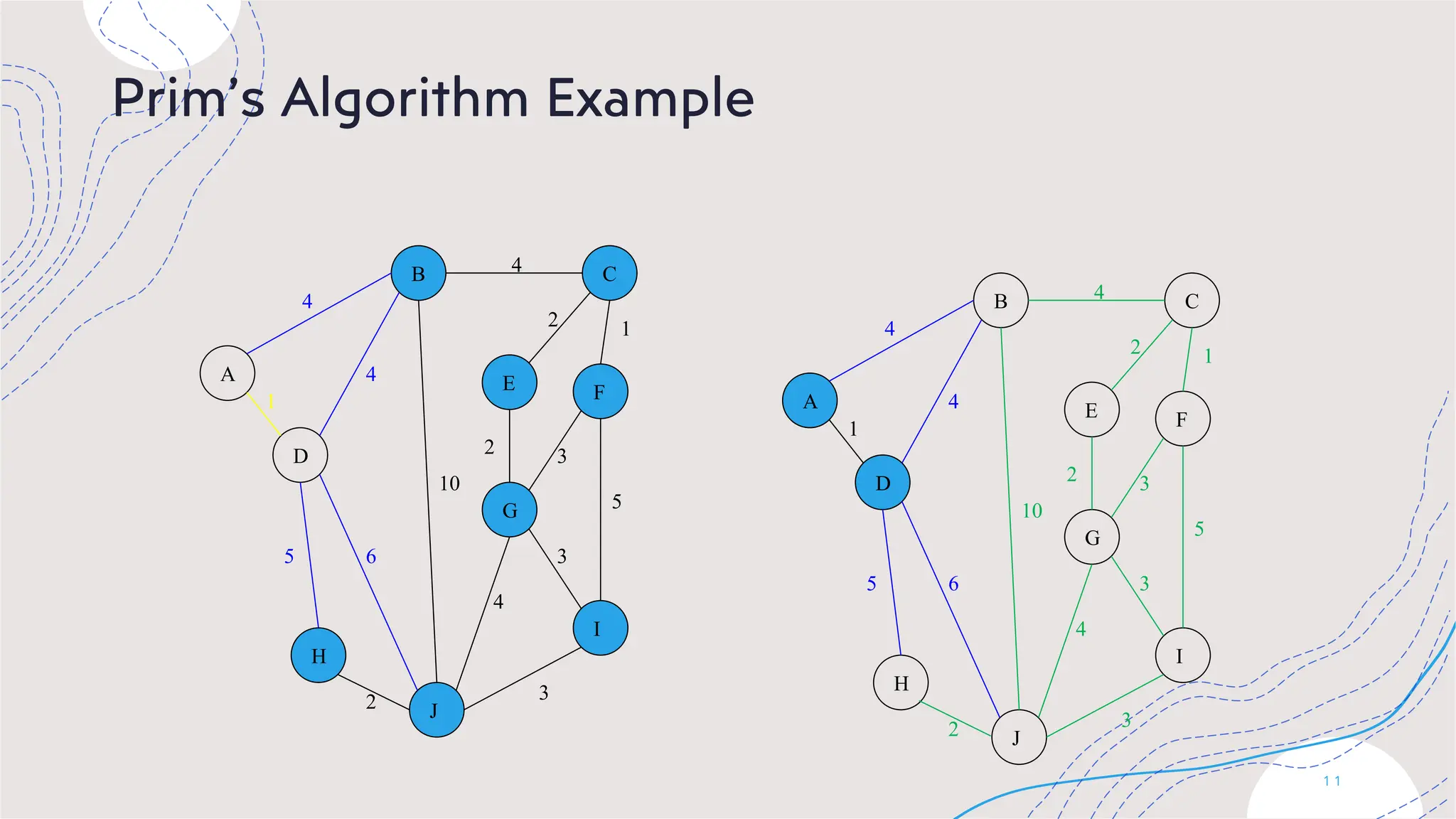
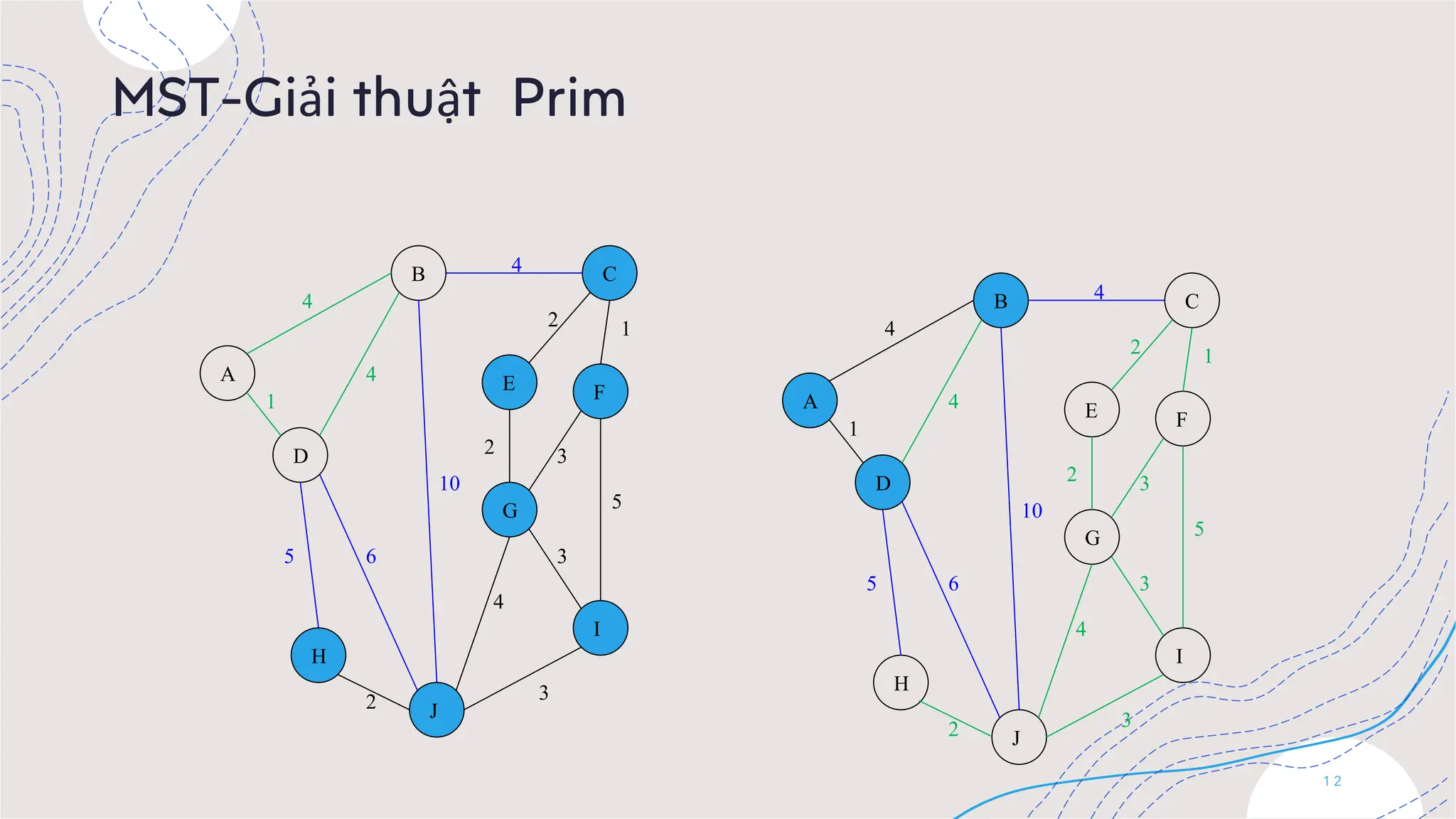
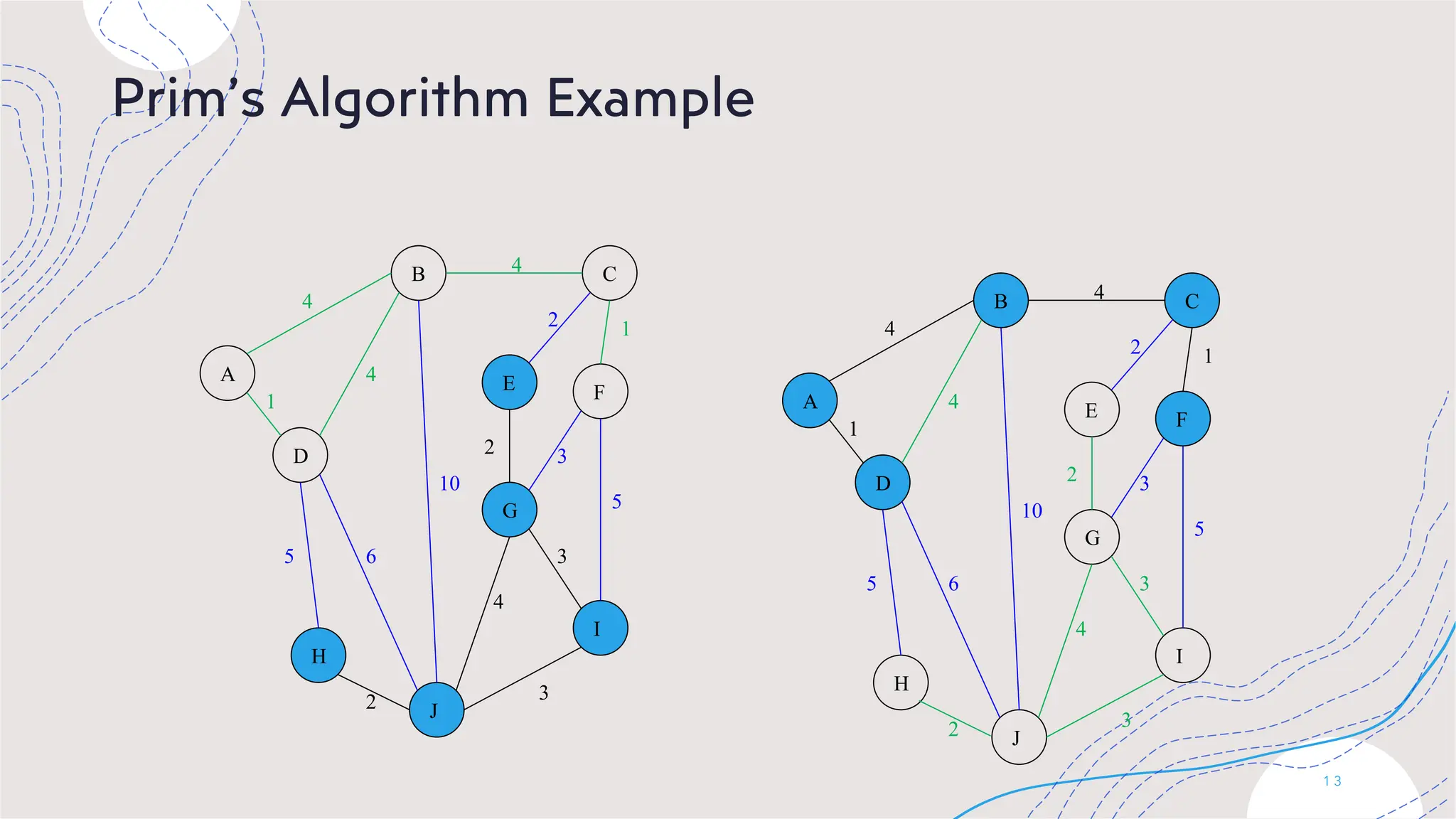
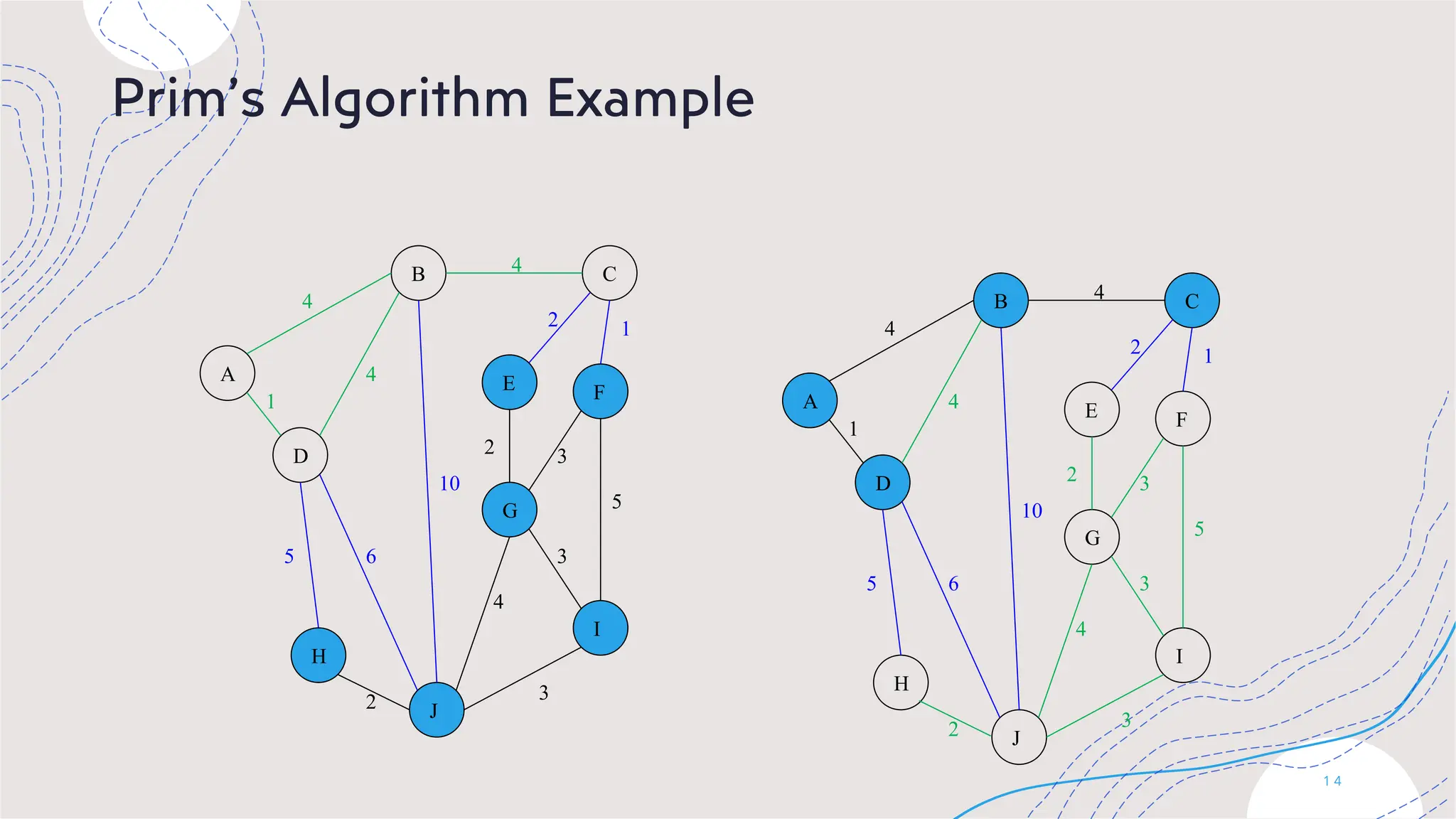
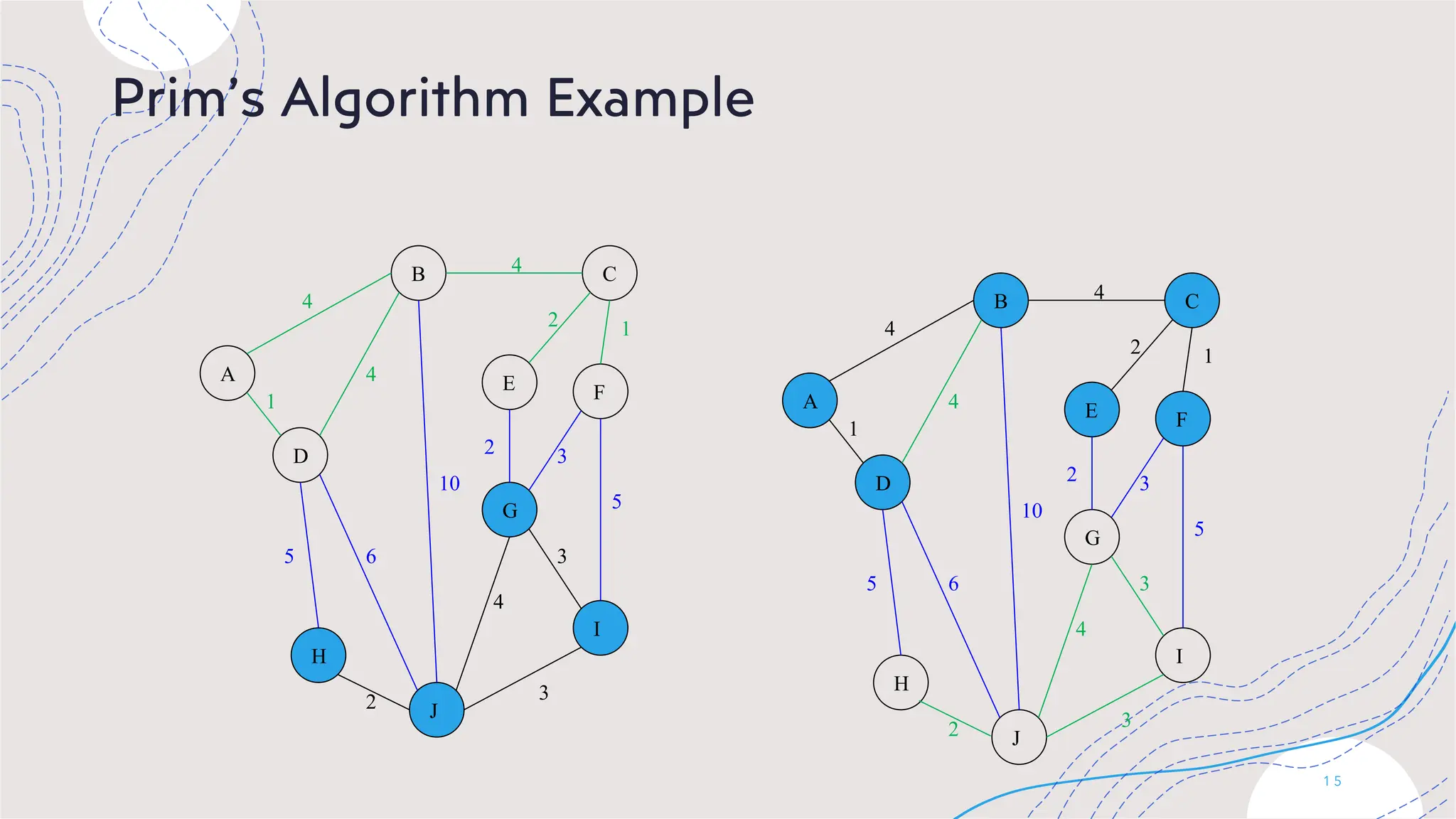
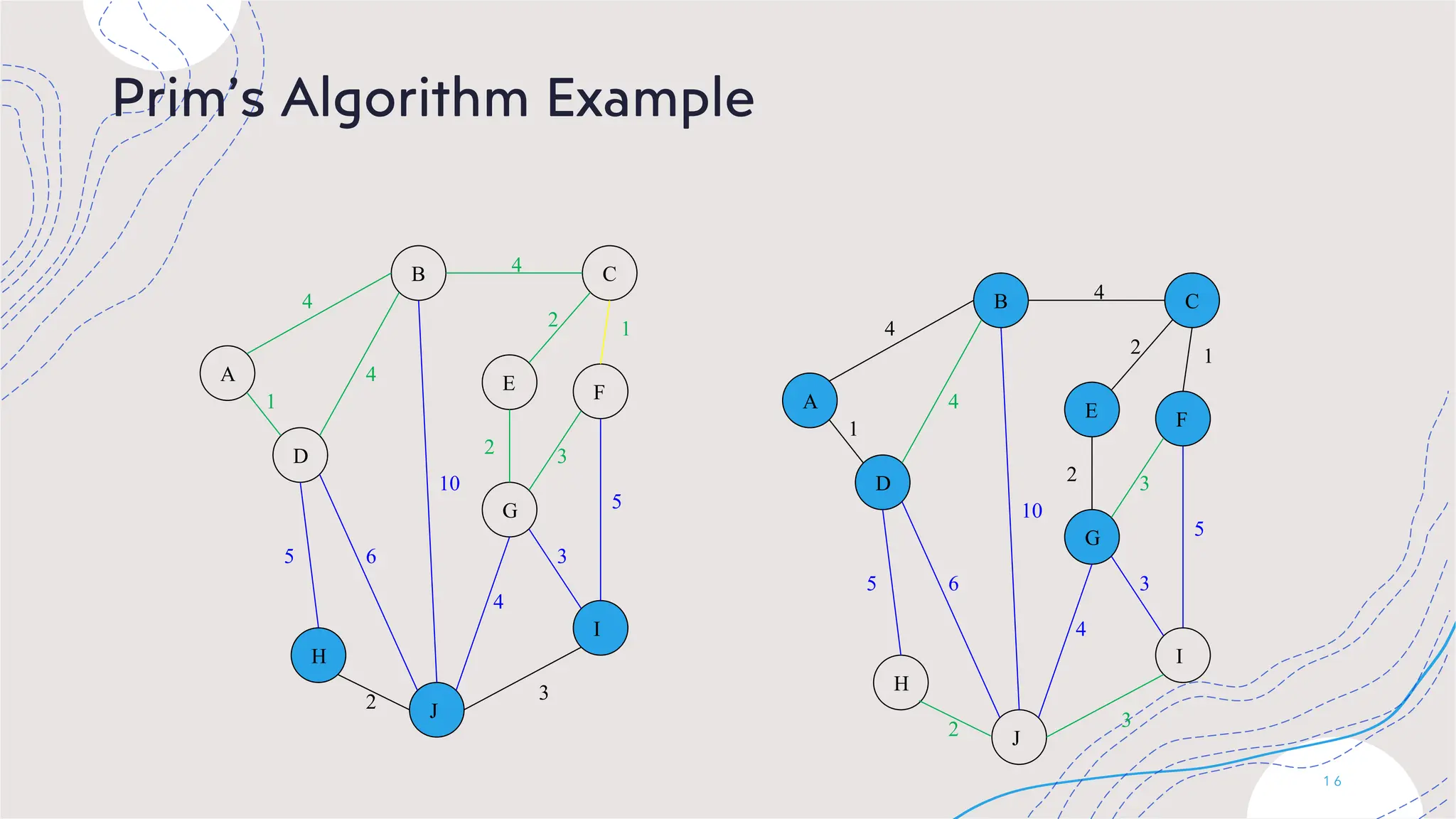
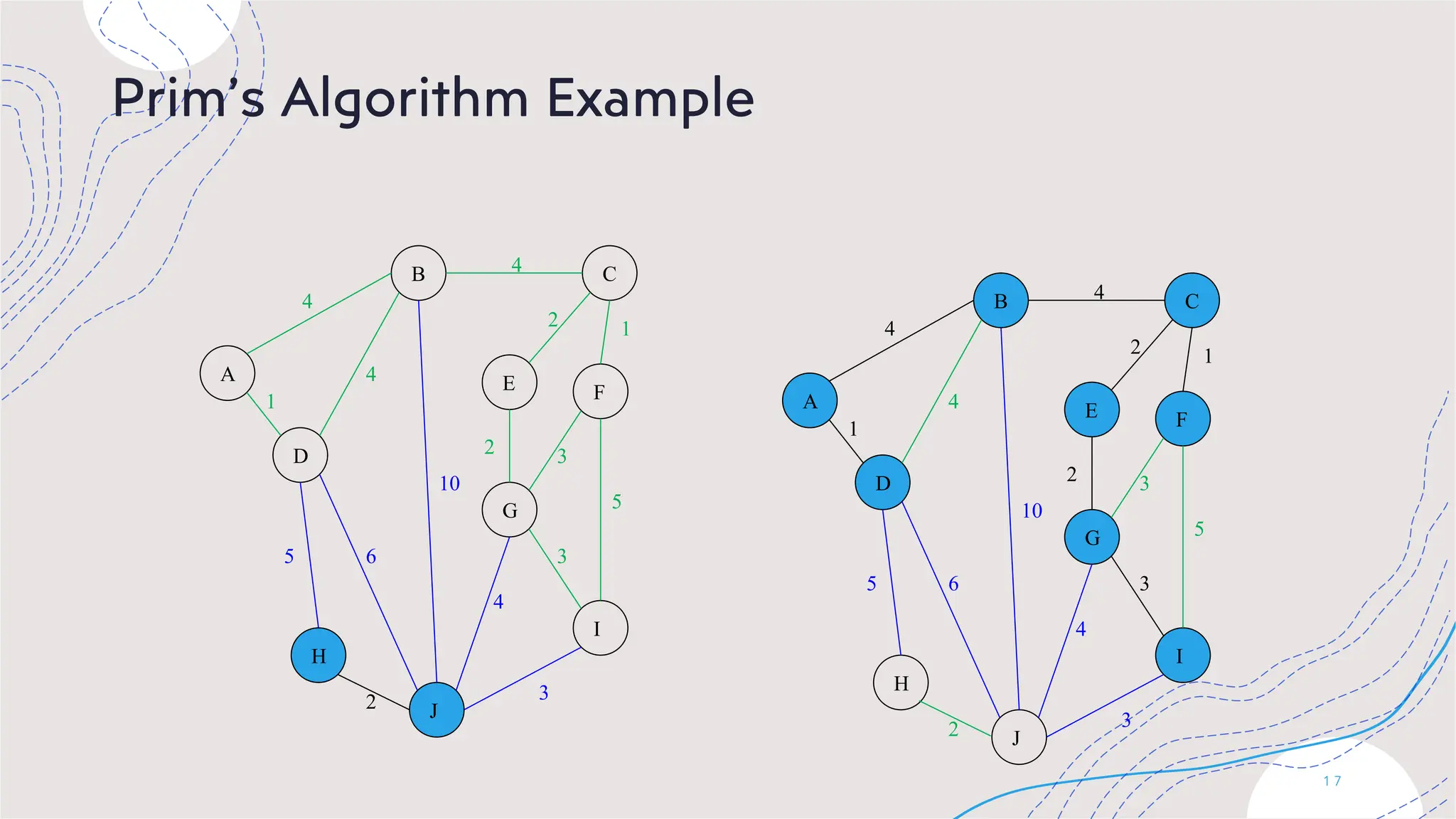
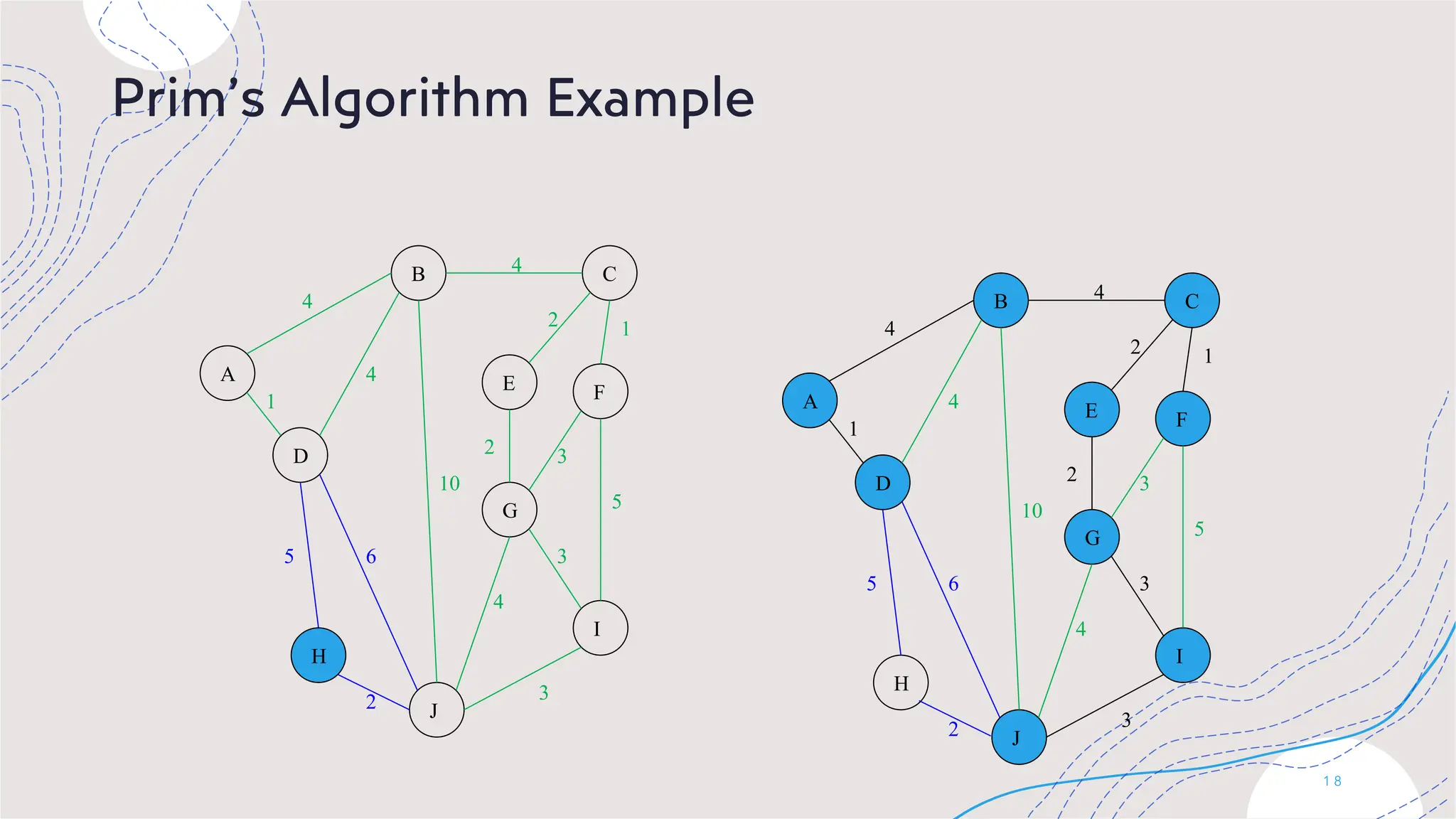
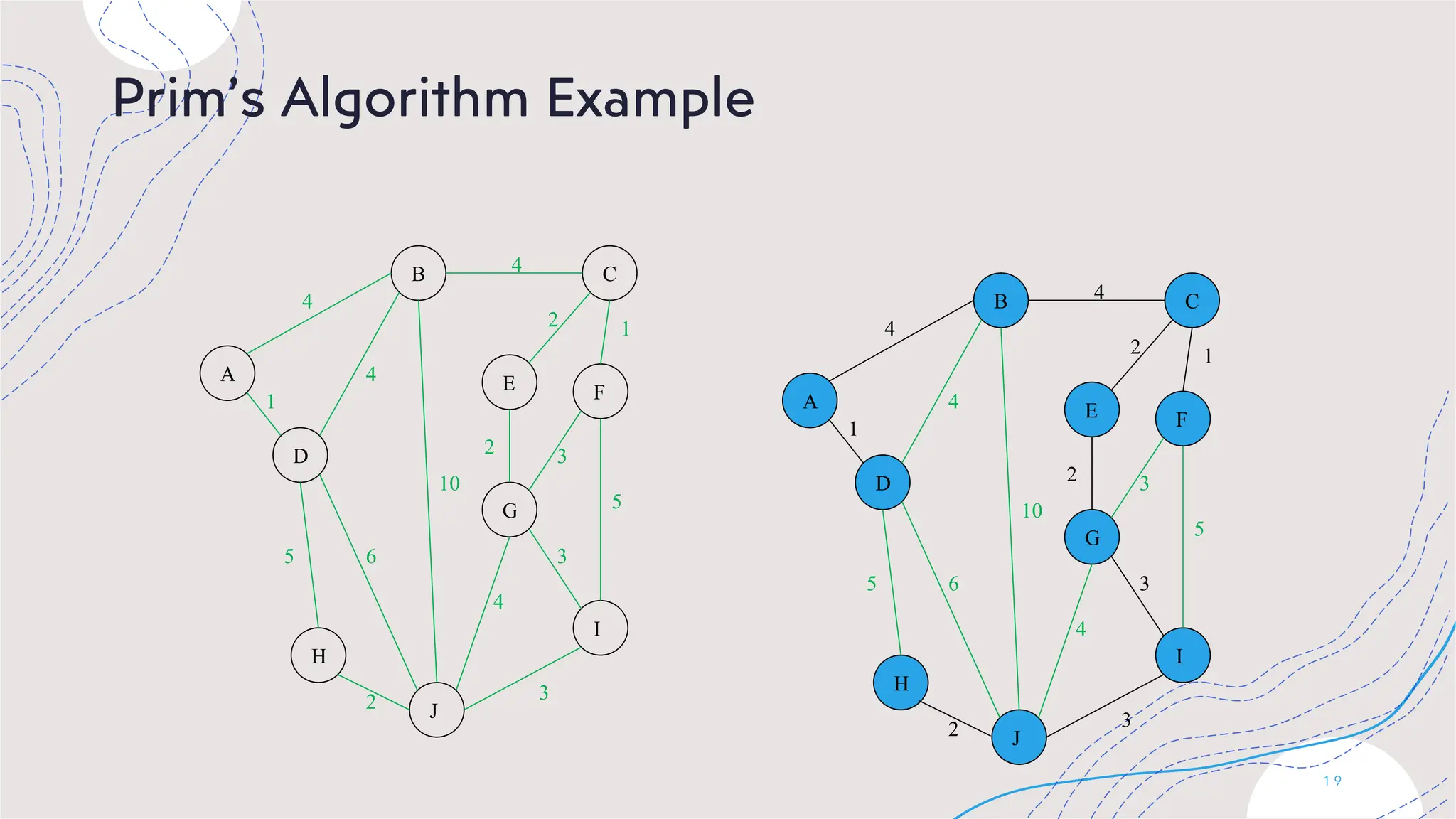
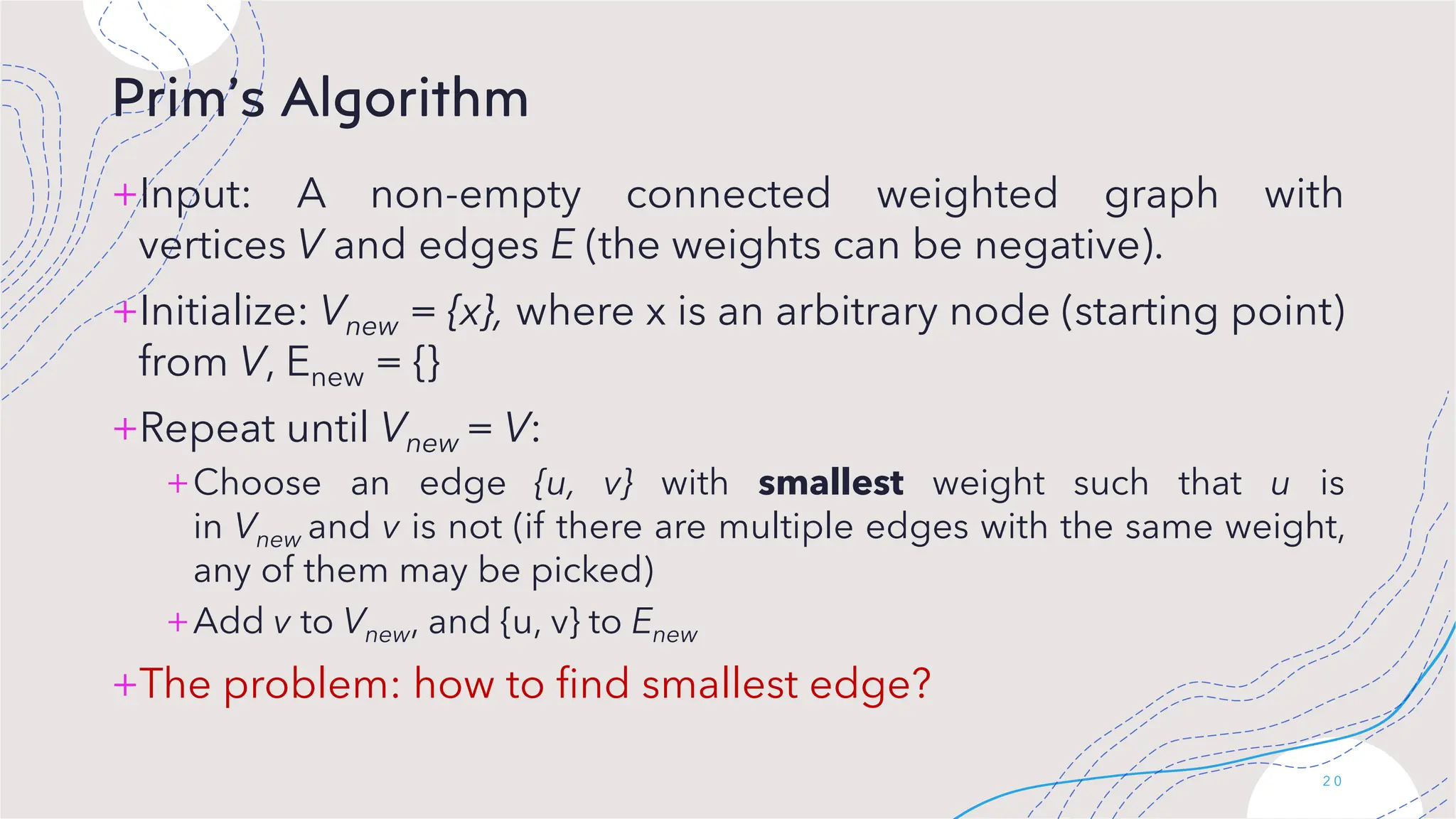

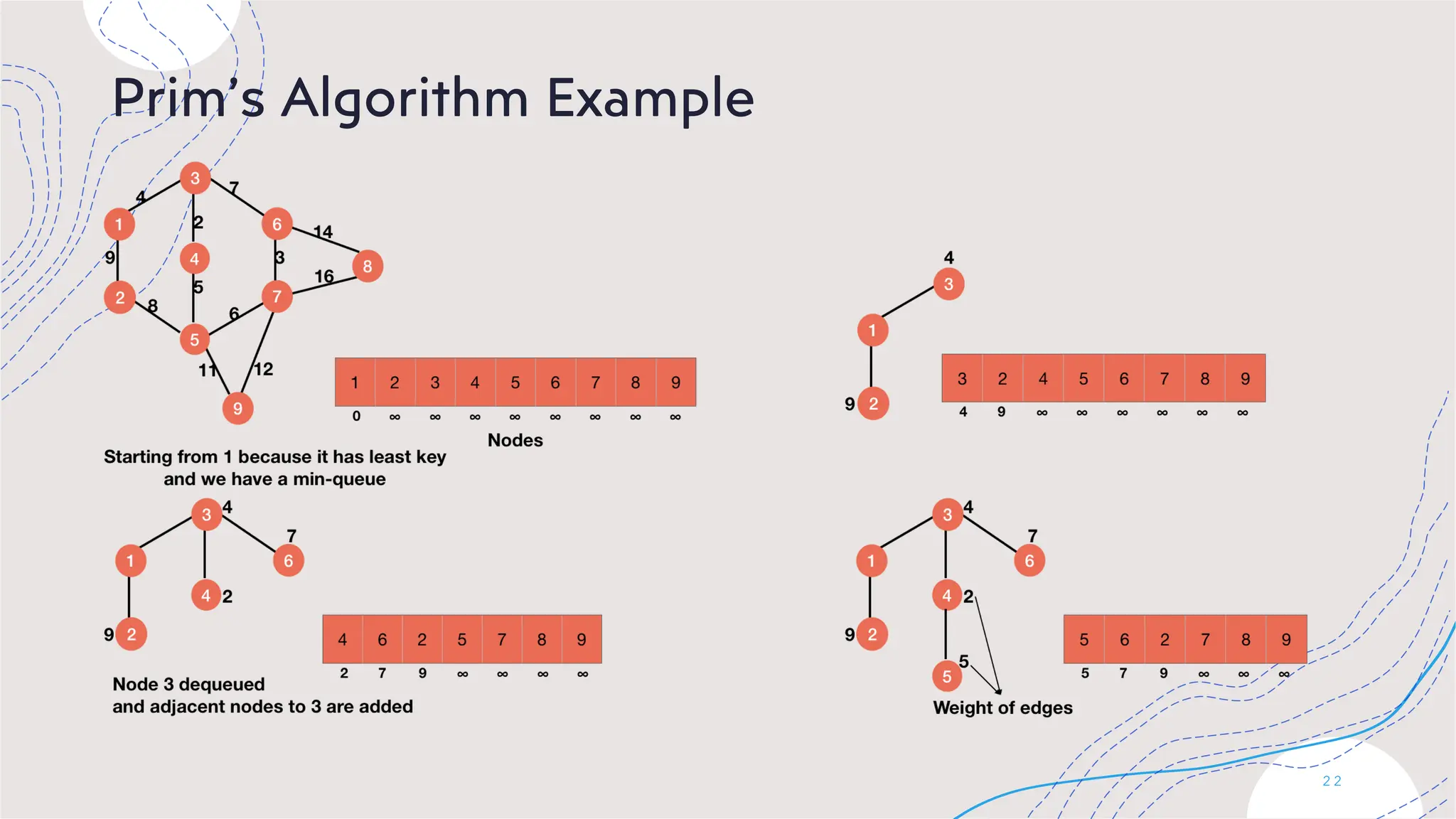
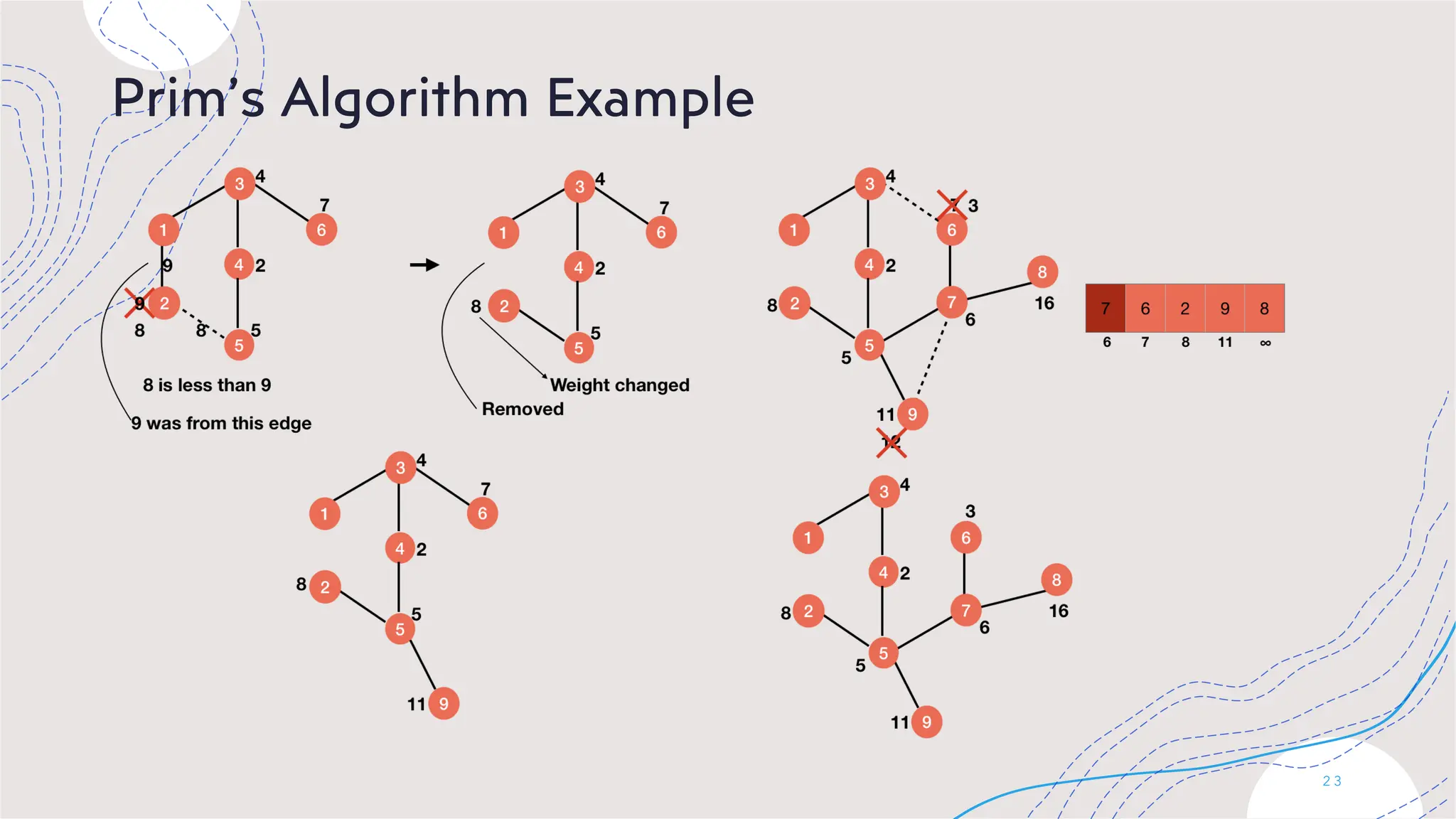
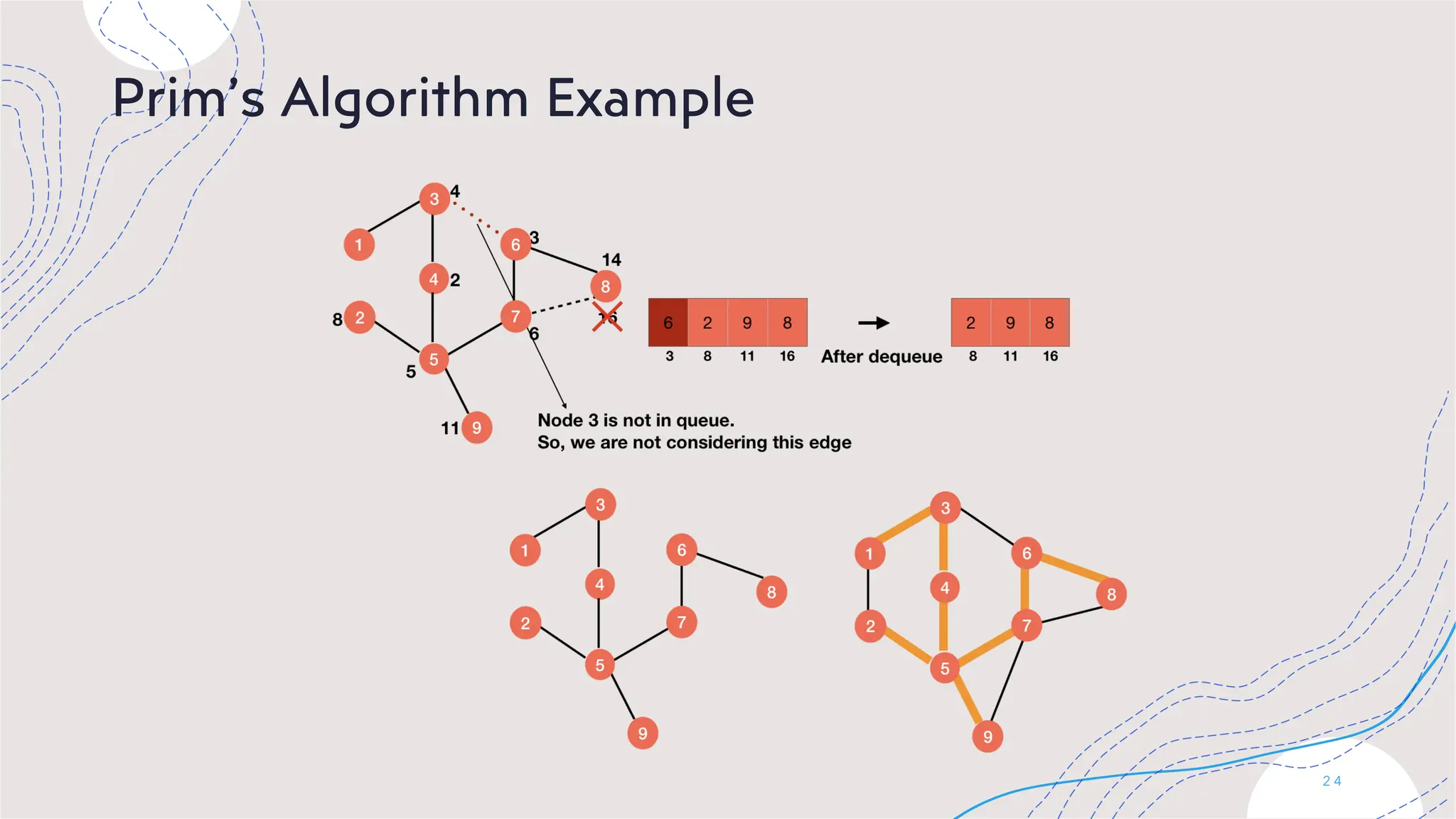
![Prim’s Algorithm implemetation
+Edge structure
struct Edge {
int w = INF; //weight. INF (INT_MAX) no edge between 2 vertices
to = -1; //to vertice
};
+Adj matrix for graph: using <vector <vector>> or 2D array.
+ vector <vector <int>> G; // or G[][]: adjacency matrix of graph
+ n: number of vertices
+One 2D vector to keep selected vertices in MST
+ vector <bool> selected(n, false); // indicates which vertices we already
have selected
+MST tree: vector <Edge> mst(n);
2 5](https://image.slidesharecdn.com/dsa-06-mst-250102141504-11a1e0bb/75/DATA-STRUCTURES-ALGORITHMS-MINIMUM-SPANNING-TREE-25-2048.jpg)
![Prim’s Algorithm implemetation
Initialize: mst[0].w = 0;
for (int i=0; i<n; ++i) { // all vertices
for (int j = 0; j < n; ++j) { // find the vertex with minimum weight value, from the set of vertices
v = -1; // not yet included in MST
if (!selected[j] && (v == -1 || mst[j].w < mst[v].w))
v = j;
}
selected[v] = true; total_weight += mst.w;
for (int to = 0; to < n; ++to) { // Update weight value and parent index of the adjacent vertices of
// the picked vertex. Consider only those vertices which are not yet
// included in MST
if (adj[v][to] < mst[to].w)
mst[to] = {adj[v][to], v};
}
}
2 6](https://image.slidesharecdn.com/dsa-06-mst-250102141504-11a1e0bb/75/DATA-STRUCTURES-ALGORITHMS-MINIMUM-SPANNING-TREE-26-2048.jpg)
